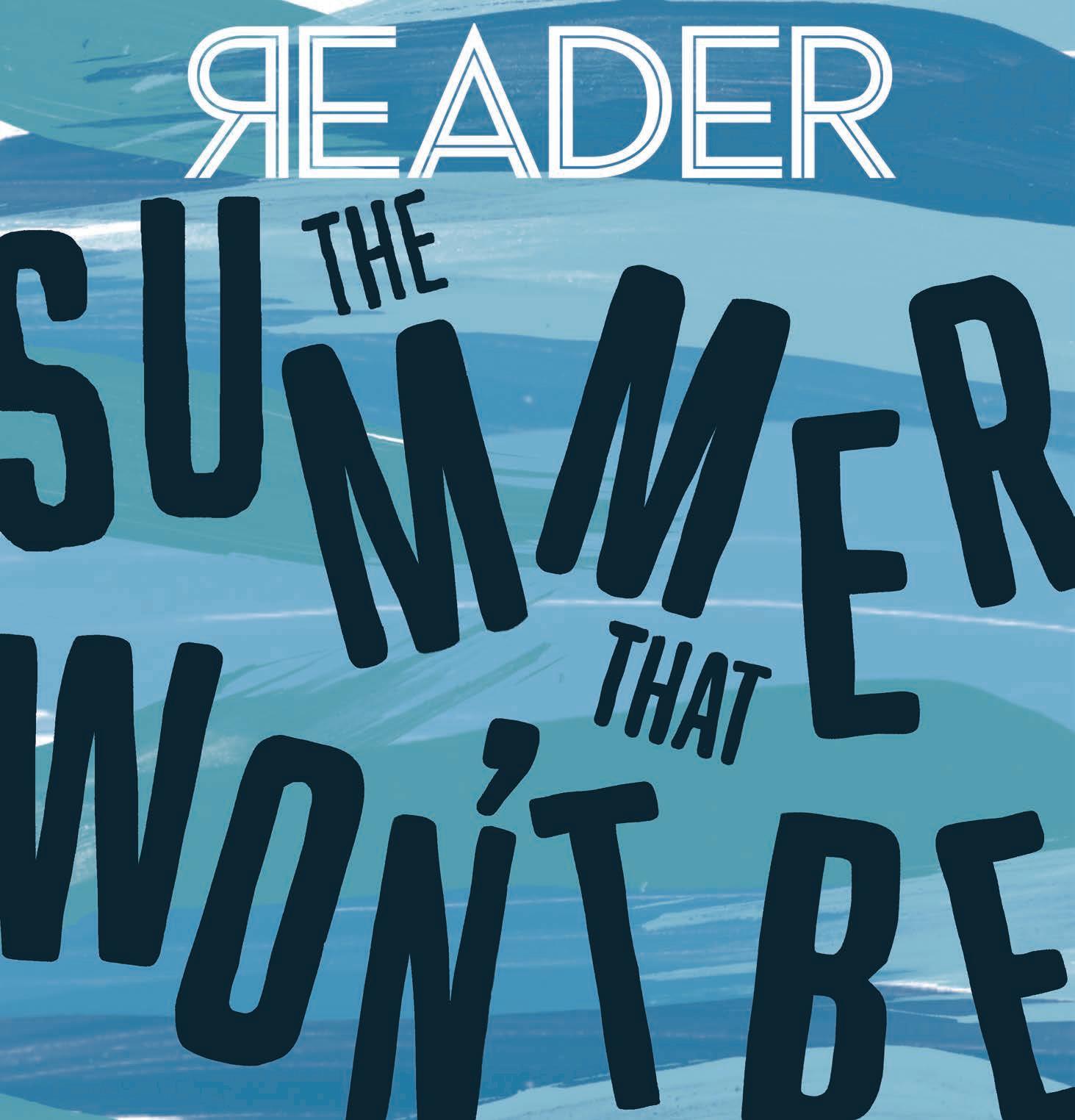
CHICAGO’S FREE WEEKLY SINCE 1971 | MAY 14, 2020
CITY LIFE
03 Sightseeing The maverick at the center of Chicago’s 1918 flu response
FOOD & DRINK
04 Key Ingredient: Pandemic
Pantry Virtue Restaurant’s Erick Williams confronts a dusty dive-bar standby: pickled eggs.
the last one.
08 Isaacs | Culture How will COVID-19 affect the bottom line for classroom fees?
FILM
22 Video Store Remembering the people and films that made Odd Obsession special
25 Movies of note Castle in the Ground is a somber immersion into the opioid epidemic; Fourteen explores the lifelong friendship between two Brooklynites; and Someone, Somewhere examines the implications of technology in connection to modern life.
Our critics review releases that you can enjoy at home.
35 Early Warnings Rescheduled concerts and other updated listings
Gossip Wolf Berta Bigtoe wrote and recorded their new indie-pop album in one day, power-pop supergroup Sunshine Boys drop their sophomore full-length, and producer Jeremiah Meece releases a warped quarantine record.
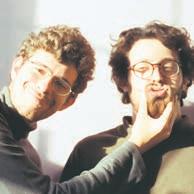
TO CONTACT ANY READER EMPLOYEE, E-MAIL: (FIRST INITIAL)(LAST NAME) @CHICAGOREADER.COM
PUBLISHER TRACY BAIM EDITORS IN CHIEF SUJAY KUMAR, KAREN HAWKINS CREATIVE LEAD RACHEL HAWLEY MUSIC EDITOR PHILIP MONTORO THEATER AND DANCE EDITOR KERRY REID CULTURE EDITOR BRIANNA WELLEN ASSOCIATE EDITOR JAMIE LUDWIG
SENIOR WRITERS MAYA DUKMASOVA, LEOR GALIL, DEANNA ISAACS, BEN JORAVSKY, MIKE SULA
EDITORIAL ASSOCIATE S. NICOLE LANE GRAPHIC DESIGNER AMBER HUFF
10 Comic An illustration about hardto-count populations and the census
12 Dukmasova | Interview A conversation about racial health disparities and what the pandemic has made intolerable

ARTS & CULTURE
14 Relationships Three people spill their thoughts on breaking up in isolation.

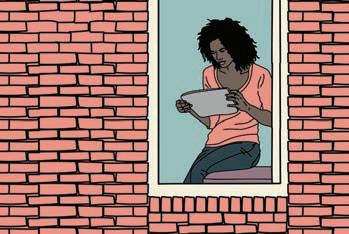
16 Podcast A mother wonders if the CPD did “a cover-up or are they just this damn incompetent?”
THEATER
17 Video “Shukran Bas” flips the cultural appropriation lens.
NEWS & POLITICS
06 Joravsky | Politics The city unveils a new Michael Reese TIF plan to undo the damage caused by
18 Streaming Alo Circus Arts and Actors Gymnasium bring the circus from their homes to yours.
MUSIC & NIGHTLIFE
26 Galil | Feature Jabari “Naledge” Evans of Kidz in the Hall talks about his doctoral dissertation, incorporating hip-hop into education, the drill scene hacking the industry, and more.
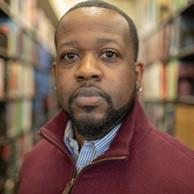
30 Chicagoans of Note Billy Helmkamp, co-owner of the Whistler and Sleeping Village
32 Record Reviews A pandemic can’t stop the flow of great music.
OPINION
36 Savage Love Dan Savage offers advice to a man whose boyfriend says he put on a curse on him.
CLASSIFIEDS
LISTINGS COORDINATOR SALEM COLLO-JULIN CONTRIBUTORS ED BLAIR, NOAH BERLATSKY, LUCA CIMARUSTI, MARISSA DE LA CERDA, MARI COHEN, JOSH FLANDERS, SHERI FLANDERS, JACK HELBIG, IRENE HSAIO, CATALINA MARIA JOHNSON, MONICA KENDRICK, STEVE KRAKOW, NOËLLE D. LILLEY, JAMIE LUDWIG, MAX MALLER, ADAM MULLINS-KHATIB, J.R. NELSON, JEFF NICHOLS, MARISSA OBERLANDER, MATTHEW SIGUR, CATEY SULLIVAN
DIRECTOR OF DIGITAL JOHN DUNLEVY
DEVELOPMENT DIRECTOR COLETTE WILLARD SOCIAL MEDIA COORDINATOR JANAYA GREENE MEDIA PARTNERSHIPS COORDINATOR YAZMIN DOMINGUEZ
STAFF AND SPECIAL PROJECTS
ASSISTANT TARYN ALLEN
SPECIAL EVENTS CONSULTANT KRISTEN KAZA
ADVERTISING 312-392-2970, ADS@CHICAGOREADER.COM CLASSIFIEDS: CLASSIFIED-ADS@CHICAGOREADER.COM
SALES DIRECTOR PATTI FLYNN
VICE PRESIDENT OF SALES AMY MATHENY CLIENT RELATIONSHIP MANAGER TED PIEKARZ SENIOR ACCOUNT REPRESENTATIVES
BY RACHEL HAWLEY
LENI MANAA-HOPPENWORTH, LISA SOLOMON ACCOUNT REPRESENTATIVES GREG MCFALL, NANCY SANCHEZ
CLASSIFIED SALES MANAGER WILL ROGERS
NATIONAL ADVERTISING VOICE MEDIA GROUP 1-888-278-9866 VMGADVERTISING.COM
JOE LARKIN AND SUE BELAIR
DISTRIBUTION CONCERNS distributionissues@chicagoreader.com 312-392-2970

CHICAGO

BOARD PRESIDENT DOROTHY R. LEAVELL TREASURER EILEEN RHODES SECRETARY JESSICA STITES AT-LARGE SLADJANA VUCKOVIC
CONSULTANT CAROL E. BELL
READER (ISSN 1096-6919) IS PUBLISHED WEEKLY BY CHICAGO READER L3C 2930 S. MICHIGAN, SUITE 102 CHICAGO, IL 60616 312-392-2934, CHICAGOREADER.COM
Invest in local news
Watch Betty, then shred
Hundreds test positive
COPYRIGHT © 2020 CHICAGO
PERIODICAL

ALL
AT CHICAGO, IL
2 CHICAGO READER - MAY 14, 2020 ll
35
38 Jobs 38 Apartments & Spaces 38 Marketplace THIS WEEK CHICAGO READER | MAY 14, 2020 | VOLUME 49, NUMBER 32
IN THIS ISSUE
Particularly in communities of color disproportionately hurt by COVID-19, access to information is critical.
The new HBO series dives even deeper into the world of the Skate Kitchen collective.
The city’s response in homeless shelters is improving, but still “not adequate,” Maya Dukmasova reports. THIS WEEK ON CHICAGOREADER.COM COVER
READER L3C
READER
POSTAGE PAID
RIGHTS RESERVED. CHICAGO READER, READER, AND REVERSED R: REGISTERED TRADEMARKS ®
The maverick at the center of Chicago’s 1918 flu response
By JEFF NICHOLS
The last great public health emergency in Chicago on the scale of COVID-19 was the influenza epidemic in the autumn of 1918. Even though 8,510 Chicagoans died of influenza and pneumonia over a period of eight weeks, Mayor William Hale Thompson made no public pronouncements about the epidemic. The city’s response to the crisis was left to Health Commissioner John Dill Robertson, a man distrusted by Chicago’s medical establishment. Dr. Robertson was a certain kind of Chicago success story. After stints as a telegraph operator and train dispatcher, he graduated in 1896 from Bennett Eclectic Medical School in Chicago. In December 1903, Dr. Robertson, a surgeon at Cook County Hospital and a professor at the American College of Medicine and Surgery, presented a medical paper that garnered international attention.
Bathing, Robertson claimed, was a profoundly unhealthy habit that encouraged infectious diseases. The problem wasn’t the purity or temperature of water, but the way washing caused “overheating the body,” thus leaving “the internal organs without their necessary amount of nourishment.” Robertson concluded his speech by telling the story of an Inuit boy, brought from Greenland to Boston, who died of pneumonia after taking a bath. Robertson confirmed to the Chicago Record-Herald that he hadn’t taken more than four or five baths in the last decade. Doctors and newspapermen alike portrayed Robertson as a crackpot. “Prof.
John Dill Robertson Points to Latest Human Peril, Water,” remarked the Chicago Tribune.
In 1911, he gave a speech to a brewers’ convention in Chicago in which he elaborated how beer kills the “malaria germ.” Robertson had
noticed that Welsh teetotalers in one Kansas town were susceptible to malaria, whereas German residents, who drank bitter, homemade brew, were not. After operating on dog spleens, Robertson concluded the “bitter principle” in bile stopped malaria and “other germs.”
Robertson was a gifted political operator. Alongside Fred Lundin, a former congressman who’d been a patent medicine salesman, Robertson worked on Thompson’s mayoral campaign and was effective in getting out the vote.
Thompson awarded Robertson the plum job of the head of the Chicago Health Department. To the embarrassment of City Hall, Health Commissioner Robertson gave homeless men in the city-run lodging homes the option of cleaning up with either cottonseed oil or soap and water. But the Chicago Health Department under Robertson made strides in expanding city sanitation, food inspection, water purification, and vaccinations.
On the other hand, Robertson quickly made an enemy of Dr. Theodore Sachs, the head of the Municipal Tuberculosis Sanitarium. Robertson had not only once claimed that an anti-bathing movement might stop the spread of tuberculosis, he had backed a quack tuberculosis cure peddled by a politically connected doctor. In contrast, Sachs was president of the National Tuberculosis Association, working for tuberculosis prevention in Chicago slums for decades.
Sachs believed that the new administration was undermining patient care by making hiring and contract decisions based on political connections. Thompson and Robertson in turn accused Sachs of being financially extravagant, incompetent, and dictatorial. As Sachs resigned from the sanitarium he built, Frank Billings, one of the city’s most respected physicians, called Robertson “utterly unqualified.”
On April 2, 1916, Sachs committed suicide, and for reformers and the medical establishment, he was a martyr to political corruption. Still, Robertson refused to step down.
Given his checkered past, it’s a wonder more Chicagoans didn’t die of influenza in October 1918. With 58 reported cases on September 24, 1918, Robertson laughed as he told the Chicago Daily News there was “no cause whatever for alarm.” Within a week, reality set in.
Because influenza was a threat to the war effort, the Council of National Defense founded the Illinois Influenza Commission, a task force made up of the public health leadership, including Robertson. With its tragic history of epidemics, Chicago had developed a large infrastructure for dealing with infectious diseas-
es. Even Robertson’s critics admitted he had a talent for organization, which was badly needed in coordinating relief efforts. Surrounded by scientists and experienced public health experts on the commission, Robertson couldn’t unilaterally chase get-well-quick schemes.
Even if he had wanted to, Robertson couldn’t touch anything related to the war effort. Mayor Thompson was under close federal scrutiny for his passive-aggressive statements against the American war effort. Robertson had to have known that Chicagoans who cared deeply about the war or were dependent on high-paying jobs in essential industries at a time of high inflation would not have, in all likelihood, stood for radical stay-at-home measures. The epidemic peaked in Chicago after a packed parade for war bonds in the Loop.
Yet the need to protect the war effort did strengthen Robertson’s hand in shutting down theaters, restaurants, and other “nonessential” gathering places whose ownership normally had significant clout in Chicago. Robertson threatened landlords who didn’t heat apartments and hospitals that turned away flu patients. Some of Robertson’s pronouncements, such as placing a piece of paper over telephone receivers, walking home from work instead of taking streetcars, wearing masks, and substituting handshakes and kisses with saluting, may have seemed kooky before COVID-19, but have a certain air of wisdom today.
Robertson wasn’t shy in claiming his role in seeing the city through the epidemic, but it wasn’t enough to undo his image as a political hack. He resigned as health commissioner in 1922 but didn’t leave politics behind. Managed by Lundin, Robertson challenged Thompson for the Republican nomination for mayor in 1926. Thompson held a deranged “debate” at the Cort Theater, in which he berated two caged rats named Fred and Doc. Telling the audience that he had given Doc his first bath in 20 years, Thompson asked the rat if he remembered “how many people came to me to protest against my appointment of you as health commissioner?”
Thompson went on to win the general election for mayor the following year, with Robertson garnering under six percent as a splinter candidate. In March 1931, Robertson was knocked unconscious in the Illinois senate during a loud argument over licensing truck drivers. Never regaining his health, he died that October at Dill-Crest, his comfortable Lake Geneva summer home. v

MAY 14, 2020 - CHICAGO READER 3 CITY LIFE
sightseeing
Meet Dr. John Dill Robertson, the “utterly unqualified” head of the city’s health department
Dr. John Dill Robertson LOYOLA UNIVERSITY CHICAGO ARCHIVES AND SPECIAL COLLECTIONS
@backwards_river
FOOD & DRINK

KEY INGREDIENT: PANDEMIC PANTRY
Virtue Restaurant’s Erick Williams confronts a dusty dive-bar standby
He finds a classic, simple solution for eggs in a pickle.
By MIKE SULA
Key Ingredient was a multimedia cooking series produced by then-Reader sta er Julia Thiel and food writer/filmmaker
Michael Gebert from 2010-2018 in which Chicago’s baddest chefs challenged their colleagues to redeem unusual, underappreciated, or often abhorrent ingredients by showcasing them in beautiful plated dishes that might or might not have been edible.
At the prompting of Funkenhausen chef Mark Steuer, we’re rebooting the series, pandemic-cooking-style.
The chef: Erick Williams, Virtue Restaurant


The challenger : Mark Steuer, Funkenhausen
The ingredient: pickled eggs
Pickled eggs are an old man’s drinking
snack. And James Beard Award finalist Erick Williams of Hyde Park’s Virtue Restaurant is nobody’s old man. So with the second installment of Key Ingredient: Pandemic Pantry, he was annoyed enough that Funkenhausen’s Mark Steuer challenged him to make something delicious out of something he’s never eaten (though his grandfather probably had).
Williams thinks a high-acidity chicken ovum is the wrong thing to pair with his preferred beverages—beer or wine. He thought a pickled quail egg might be a good garnish for a martini or a bloody mary, but those are his least favorite things to drink. It was particularly aggravating because eggs take at least a week (or more) to pickle. Steuer might have a big dusty jar in his basement bar, but Williams sure didn’t.
What to do?


4 CHICAGO READER - MAY 14, 2020 ll
of Chicago-area restaurants




FOOD





































































How do you
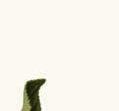




























that



“You hard boil them just until the eggs are set because you want the yolk not green, but yellow,” Williams says. “And then you’re gonna add heat again through the pickling liquid, so they’ll cook a touch more. I was able to achieve yellow the first go around, so I was really stoked. It’s the little things in life.” Williams peeled them and submerged them in a standard pickling brine—say three parts vinegar to one part water, plus salt, aromatics, and herbs—and let them be.
Meanwhile, he had plenty to keep him busy. Virtue discontinued its curbside pickup and delivery business in late April and pivoted to preparing hot meals for nighttime medical residents at the University of Chicago Medical Center. Through a combination of the restaurant’s initial GoFundMe and a new First Responder Support Fund (that you’re invited to contribute to), along with renegotiations on the terms of his rent and (most of) his vendor arrangements, Williams has been able to keep 6 to 15 of his employees working, depending on the orders of dishes, like roasted maple-glazed chicken with charred lemon broccoli or spaghetti marinara with zucchini and garlic bread, they need to get to the hospital each day. “There’s always some kind of full salad—not just lettuce in a box—and a chocolate chip cookie, or some other kind of sweet,” he says. “The mac and cheese is just warm enough so you don’t have to blow, but you don’t have to search for a microwave.” One less thing to worry about on a busy shift.
“You think people in restaurants are trying to figure out their next move?” he says. “Imagine the health-care workers. We thought, ‘Why don’t we work on their morale?’”









Still, with all that going on, Williams rose to the pickled egg challenge. “Pickles thrive in egg salad,” he says. So he cut to the chase with a classic, simple mix of diced pickled egg, olive oil, capers, chopped red onion, and dill, which he plated with some smoked salmon, biscuits, and pickled vegetables.
Go suck an egg, Steuer. v
Who’s next: Brian Jupiter of Ina Mae’s Tavern, whose challenge is redeeming “dryass chicken breast.”
“That’s a real experience,” says Williams. “In restaurants it’s always some kid that knows everything who runs away from the stove for just a second and he overcooks the money. You burn enough shit and you burn all the profit.
Pickled Egg Salad

Erick Williams, Virtue Restaurant

whole

















bunch fresh dill, chopped


cup capers, drained and chopped
cup red onion, chopped salt and pepper,
Dice the pickled eggs, and place them in a large bowl. Season with salt and pepper. Add the olive oil, folding it in gently with a rubber spatula.
Finish by adding the chopped herbs, capers, and red onion. Taste and correct seasoning with salt and pepper.
Serve with biscuits, smoked salmon, sliced red onion, and pickles.



@MikeSula






















































MAY 14, 2020 - CHICAGO READER 5
Pickled Egg Salad
ERICK
WILLIAMS
& DRINKSearch
the Reader’s online database of
thousands
at
chicagoreader.com/food
recapture
revenue?”
Chef
4
pickled eggs 1 cup olive oil ¼
¼
¼
to taste
Find hundreds of Readerrecommended restaurants, exclusive video features, and sign up for weekly news at chicagoreader.com/ food. ENJOY RESPONSIBLY © 2020 Virtue Cider, Fennville, MI 49408 FROM OUR FARM TO YOUR DOOR VIRTUE, IT’S AT OUR CORE VIRTUECIDER.COM TO ORDER
NEWS & POLITICS
POLITICS
Bob Dylan’s ode to Chicago
The new Michael Reese TIF plan tries to undo the damage of the old one.
By BEN JORAVSKY
Just when I thought I could take no more depressing news about COVID-19, or Trump, or our impending economic collapse, along comes the city with a little happy news to lift me from my funk . . .
It’s another multimillion-dollar TIF deal for the South Loop—at the site of the former Michael Reese Hospital, no less.

Oh, happy days—TIF scams to write about. As opposed to the end of civilization as we know it. It’s the little things in life, my friends.
OK, for all who have forgotten . . .
Tax increment financing is a program in which the city slaps an undisclosed surcharge on your property taxes and diverts the money into a slush fund the mayor is pretty much free to spend as she wants.
Earlier this month the city announced it was thinking of spending up to—well, they haven’t gotten around to revealing precisely how much TIF money they will spend—redeveloping the old Michael Reese site at 31st and Cottage Grove.
At the moment, they say they’ll dedicate $31 million in TIF funds to clean up the waste left from an old radium processing plant on the site.

If all goes well, Farpoint Development will oversee a $3.5 billion mixed-use project,
anchored by a medical research facility run by Sheba Medical Center, an Israel-based operation.


There may be housing, retail, a new Metra station, a community center, and a park on the site. The key word being may—’cause it’s down the road. As in, we’ll see.
Construction on the medical center should start next year, once the city and Farpoint work out the details of that TIF deal. Which, I assume, they’ll eventually get around to sharing with us.
According to the city, we can thank Mayor Rahm for this project—he was the one who got Sheba Medical Center interested in the location.
Now, wait a minute, everyone! Just because Mayor Rahm had something to do with this doesn’t mean it’s automatically as bad as, oh, Lincoln Yards, that stink bomb of a boondoggle Rahm got the City Council to pass as he left o ce.
In fact, at the risk of sounding hopelessly naive, this actually could be a worthwhile TIF deal. They’re proposing to take city-owned land that nobody knows what to do with and put it back on the tax rolls—creating jobs as we head into an economic depression.
So, that’s good, right?
Well, it’s too early to tell exactly how good it
6 CHICAGO READER - MAY 14, 2020 ll
is. As, again, the city has not revealed how much TIF money this thing will cost us.

Think of it like buying a car—you don’t know if you’re getting a good deal until you see the price tag.













Let me remind you that as a rule of thumb, it pays to be skeptical about TIF deals—as we learned from the aforementioned Lincoln Yards deal. A few details . . .
In 2017, Mayor Rahm announced—good news, Chicago! The city sold its old north-side fleet facility—across the street from the Hideout—to Sterling Bay for about $105 million.
Then Mayor Rahm paused to let you jump for joy. Man, he must really think you’re stupid, people.
Two years later that same Mayor Rahm got the City Council to give Sterling Bay $1.3 billion to develop that abandoned fleet facility—and many surrounding parcels—into Lincoln Yards.
All in all, Mayor Rahm effectively returned the $105 million—and then some—to Sterling Bay.
You might say, Sterling Bay got prime, northside real estate for free. Something to think about the next time any mayor tells us we’re too broke to pay for school nurses.
In defense of Mayor Lightfoot—she brought in a new commissioner to run the Planning Department. His name is Maurice Cox, and he swears up and down he’ll make sure TIF dollars are more wisely, prudently, and equitably spent.
I’m rooting for you, Mr. Cox. But beware— there are lots of sharks in these waters.
In general, Mayor Lightfoot has promised to never, ever sign onto a boondoggle like Lincoln Yards. We shall see.

By the way, Michael Reese is also part of a boondoggle.



In 2004 as the old hospital was going bankrupt, the site was purchased by Medline, a medical supply company from the northern suburbs, for about $24 million.




A few years later, Mayor Daley came up with the not-very-bright idea of bidding to host the 2016 Olympics.
Needing to show the International Olympic Committee that we had a sufficient place to build an Olympic Village to house athletes, Daley paid top dollar to buy the land from Medline.
Medline wound up having some $91 million fall into its lap just before the housing market collapsed with the recession of 2008. And the city, of course, didn’t win the Olympic bid.
As Bob Dylan put it in an old song—“I can’t help it if I’m lucky.” By the way, the name of that song is “Idiot Wind.”








Mayor Daley swore up and down that the purchase of Michael Reese would not cost taxpayers a dime.
He said we would make the money back, even if the Olympics didn’t come to town.
He said the land was so valuable that someone would eventually swoop in to buy it.

That’s what he told you, people. As the movers and shakers of Chicago nodded along.

Like I said—it pays to be skeptical about what the powers that be promise when it comes to TIF deals.
I don’t think we’ll ever recover the $91 million we paid Medline for the Michael Reese land, no matter what gets developed there.

In the end, Medline, one remarkably lucky company, walked away with more TIF money than many west- and south-side neighborhoods will receive in years. And the program is intended to eradicate blight in poor communities.
It’s like Bob Dylan wrote that song about us. v
MAY 14, 2020 - CHICAGO READER 7 NEWS & POLITICS
Michael Reese Hospital before the boondoggles began.
ERIC
ALLIX ROGERS
/ CC BY-NC-ND 2.0
@bennyjshow IMPORTS & DOMESTICS ‘15 Toyota RAV4 Ltd. AWD/Navi. ................Auto., Leather, 12K, Grey, 24225A ......$18,995 ‘19 Toyota Corolla Hatchback XSE/Navi. ........Loaded, 11K, Silver, 22343R ......$17,995 ‘17 Honda CR-V LX AWD ........................Automatic, Full Power, White, 24205A ......$17,995 ‘12 Acura TL w/Tech/Navi/ ....................Leather, Moonroof, Black, 24284A ......$11,995 ‘11 Honda CRV EX AWD ..............................Automatic, Sunroof, Silver, 24311A ........$9,995 ‘15 Kia Soul ..................................................Manual, Full Power, Alien2, 21917A ........$8,995 ‘14 Honda Accord LX ..............................Automatic, Full Power, Silver, 23628B ........$8,995 ‘11 Chevy Equinox LT ..............................Automatic, Full Power, Silver, 24025A ........$8,995 ‘11 Honda Accord LX ................................Automatic, Full Power, 67K, 24134A ........$7,995 ‘17 Hyundai Elantra SE .......................... Automatic, Full Power, Black, 24159 ........$7,995 ‘08 Jeep Grand Cherokee Laredo 4x4..................Automatic, Beige, 24250A ........$6,995 ‘09 Mini Cooper S ....................Automatic, Full Power, 58K, Dark Silver, 24393A ........$6,995 SUBARU FORESTERS ‘17 Forester Ltd. ........................Automatic Sunroof, Leather, Silver, 24102A ......$17,995 ‘16 Forester Prem. ............Automatic, Sunroof, Heated Seats, Red, 24456A ......$16,995 ‘14 Forester Prem. ..........Automatic, Sunroof, Heated Seats, White, 24116A ......$13,995 ‘09 Forester XT Ltd ..................Automatic, Sunroof, Leather, Green, 24391A ........$8,995 SUBARU OUTBACKS / ASCENT / CROSSTREK / WRX ‘19 Ascent .................................. 8 Passenger, Sunroof, Eyesight, 4K, Grey, P6528 ......$25,995 ‘16 Outback Prem. ....................Automatic, All Weather, Alloys, Black, 24117A ......$17,995 ‘14 Outback Prem. ................................Auto., Full Power, Alloys, Silver, P4891 ......$12,995 ‘17 WRX ................................................................Automatic, Black, 24K, P6517 ......$19,995 ‘17 Crosstrek Prem. .................................. Automatic, All-Weather, Black, P6469 ......$19,995 ‘16 Impreza 2.0i ........................................ Automatic, Full Power, Silver, P6545 ......$16,995 ‘12 Outback 2.5i ......................................Automatic, Full Power, Black, 23880A ........$7,995 EvanstonSubaru.com 3340 OAKTON - SKOKIE • 847-869-5700 A+ RATED NO SECURITY DEPOSIT! $2,995 due at signing. LFB-02 #0361 AUTOMATIC, Roof Rails, Alloys EyeSight, All-Wheel-Drive $95 1 0% TOP-QUALITY INSPECTED USED CARS & SUV’ S NO SECURITY DEPOSIT! $2,995 due at signing. LDB-01 #0292 AUTOMATIC, Back-up Camera EyeSight, All-Wheel-Drive *19$8 36 MONTH LEASE * 36 MONTH LEASE * 36 MONTH LEASE 0% NO SECURITY DEPOSIT! $2,995 due at signing. LRA #73012 All-Wheel-Drive, 17’’ Alloy Wheels, Apple Carplay / Android Auto $74 1 0.9% *Add tax, title license and $300 doc fee. 0% financing for 63 months. Monthly payment of $15.87 per $1,000 borrowed. Finance on approved credit score Subject to vehicle insurance and availability. *Lease on approved credit score. Lease, 10k miles per year, 15 cents after. Lessee responsi-ble for excess wear and early termination of lease. End of lease purchase option; Outback $17,806. Crosstrek $13,198, Forster $16,495. Ends 5/31/2020 When A Great Deal Matters, Shop Rob Paddor’s... NEW DESIGN NEW DESIGN Voted “Best Auto DeAlership ” By CHICAGO Voters’ Poll 2019 Evanston Subaru in Skokie NEW 2020 SUBARU FORESTER NEW 2020 SUBARU CROSSTREK NEW 2020 SUBARU OUTBACK 0 0 0 0 FORESTER OUTBACKASCENT IMPREZA 0% FOR 63 MONTHS FOR A LIMITED TIME We are vigilant in upholding the practices as recommended by the CDC SALES BY APPOINTMENT ONLY EMAIL: EPADDOR@EVNSI.COM OR CALL: 847-869-5700 Monday-Friday Monday-Friday Saturday Saturday 9:00AM-8:00PM 9:00AM-6:00PM chicagoreader.com/donate Chicago's Free Weekly Since 1971 We Couldn't Be Free Without You— Support Community Journalism
Life

Ularsee Manar
It is with a heavy heart that I, Alicia Garcia-Abner, President of Trinal, Inc., announce that Mr. Ularsee Manar, my colleague and dear friend, left for his journey Home on, Friday, May 1st. He was a victim of COVID-19. met Ularsee Manar in 1987 when started work at the City of Chicago Department of Procurement Services. Mr. Manar had a wide and varied professional career. As Assistant to the President for Community Development and Special Programs at Trinal, Inc., Ularsee was responsible for the firm’s community-related advocacy outreach as well as identifying and cultivating new market opportunities. He was a trusted friend who supported and provided guidance throughout our company’s 23 years.
Mr. Manar formerly served as the Director of Business & Industry Services for Kennedy King College. He was responsible for developing and implementing comprehensive workforce development training programs for Chicago area businesses and financial and industrial sector companies.
As the Director of Outreach Programs for the City of Chicago’s Department of Procurement Services, Mr. Manar was responsible for managing the City’s Minority and Women Business Enterprise Procurement Program. He developed and directed the City’s outreach efforts throughout the Chicago area with an emphasis on serving as an intermediary between city vendors, local trade and business associations and the City of Chicago’s procurement department.

Mr. Manar’s additional experience includes: President, Manar & Associates, a small business and human resource development company; Senior Associate, Center for New Schools; Director, Chicago Urban League Development Corporation; Director, Corporate Planning, Chicago Economic Development Corporation; Research Director, Chicago Independent Transportation Survey, Technical Advisor to the Illinois department of Transportation; and Child & Family Psychotherapist, Children’s Day Hospital School, Rush University Medical Center, Department of Psychiatry.
I would also like to mention that Mr. Manar was the lead tenor in the singing group the Buddies in the mid-1950s, a playwright, and was an avid fan of the Chicago Bulls.
What I mentioned above was just a tip of the iceberg of Mr. Manar’s talents, experience, and tireless efforts to assist those in need. He would attend sessions at the Cook County Correctional Facility as an inspirational speaker. Ularsee Manar was a great influencer and I was truly blessed, as were so many others, to have him in my life. I will miss my dear friend and I ask that you keep him in your prayers along with others as we all go through these most challenging times.
Ularsee leaves to carry on his legacy and mourn his loss; two devoted sons, Andre Manar (Francine) of Providence, RI, Keith Smitherman (DeShong) of Indianapolis, IN; two brothers Edward Manar, Jr. of Los Angeles, CA; Marvin C. Manar (VaNessa) of South Holland, IL. Sisters: Harriet Dorsey (Donald) of Las Vegas, NV; Darnisha Hawkins (Jon) of Chicago, IL; and Mamie New of Las Vegas, NV; four grandchildren and a host of nieces, nephews, cousins, friends and business associates.


A private graveside service was held May 8, 2020, at Oakwood Cemetery. Arrangements were entrusted to Kenny Brothers Funeral Directors, Phone: 708.425.4500. Feel Free to leave a memory and/or condolences at www.dignitymemorial.com.
In lieu of flowers, donations can be made in Ularsee’s name to Hartzell Memorial United Methodist Church. Call 312-842-5957 to donate.
CULTURE
U of C students petition for tuition cuts
How will COVID-19 affect the bottom line for classroom fees?
By DEANNA ISAACS
College students are not stupid. So, back in mid-March, when it became clear that any campus could flame into a virus hot spot, and students across the country were sent home with instructions not to return from spring break, it didn’t take long for them to wonder why they should continue paying top dollar for a higher education experience that was playing out in their childhood bedrooms. After a few fascinating hours of online lectures, it occurred to some who’d already shelled out a full semester’s tuition that they might be entitled to a partial refund.
And at the University of Chicago, which was about to launch into a whole new quarter, some students started to think they shouldn’t have to pay the usual twenty grand.
By the end of March an ad hoc group— UChicago for Fair Tuition—was campaigning for a 50 percent cut in tuition for the duration of the coronavirus crisis. When UCFT posted a tuition-cut petition that included a few other demands (like a long-term tuition freeze and budget transparency), it


quickly attracted more than 1,800 student signatures.
On April 13, the University of Chicago announced a one-year freeze on the cost of tuition, fees, and room and board—which UCFT claimed as a victory. But the administration stonewalled the student group on its request for negotiations, and UCFT raised the ante, calling for a spring quarter tuition strike. As an April 29 deadline for payment approached, UCFT said about 600 students were considering withholding tuition payments, and 200 had definitely not paid.
Tuition at the University of Chicago is nearly $58,000 annually (room, board, and fees add another $20,000 or so), which makes it one of the most expensive colleges in the country. But it also has one of the most generous financial support programs, bolstered by the announcement two years ago that it will guarantee free tuition for students whose family income is less than $125,000 annually, and will throw in free room, board, and fees for those with family incomes of less than
8 CHICAGO READER - MAY 14, 2020 ll NEWS & POLITICS
Celebration of
SEPTEMBER 18, 1935 – MAY 1, 2020
MONEY+ POWER Visit ChiUL.org/moneyandpower
$60,000.








In a May 7 e-mail to the university community, president Robert Zimmer estimated that COVID-19 will cost UChicago $220 million in this academic year, and warned that next year’s loss could be even worse. The university had already instituted spending cuts along with salary and hiring freezes, but, Zimmer added, “additional cost saving measures will be required in the coming months.” (A university spokesman said UChicago is considering whether to accept the $6 million it’s been o ered in federal stimulus funds.)



UCFT, pointing to UChicago’s hefty endowment ($8.5 billion before the pandemic), argues that its refusal to provide financial relief to the student body in this time of crisis reveals the school’s true priorities. But this week—when push came to shove—the group was backing down. “The strike is going to end soon,” UCFT organizer Luis Rubio said Sunday, “because if we continue, the university is able to put holds on our accounts, which means that we wouldn’t be able to register for classes.”
“We don’t want to do that. We want to prioritize students every step of the way,” Rubio said. “So we’re just looking to negotiate with the university, to discuss with them what options there are, and how they can help us.”

Similar petitions at Northwestern and UIC drew about 5,000 and 8,500 signatures respectively, and class-action lawsuits arguing breach of contract in the substitution of online classes for the campus experience have now been filed against dozens of colleges and universities across the country. That’s

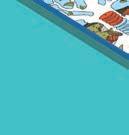

not a route that UCFT as an organization is pursuing, however. “Although we believe that the issue of not getting what we’re paying for is a problem,” Rubio said, UCFT is more concerned about “a larger systemic problem of insane tuition prices that hurt marginalized, international, low-income, and fi rst-generation students.”
Lawsuits against schools like Indiana University and Purdue claim that, in e ect, students have paid for a car, but are getting a bicycle. This is the education-as-a-commodity argument that academics have historically rejected, and it’s led some schools to the treacherously in-kind reply that, well, students are still getting the credits they signed up for.

But there might be another defense: Association of American Colleges and Universities president Lynn Pasquerella told me this week that “in this case there was a sense of urgency with respect to protecting the health and safety of students. It was a time of necessity; [the colleges] were forced to move their classes online.



“So I think students will have a much less likely chance of winning those suits, given that colleges and universities had to pivot so quickly, than they might if institutions decide to maintain remote learning and charge the same tuition in the fall.”














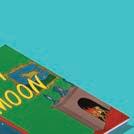




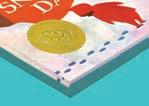
Is that a possibility?





















“Every president I know of is looking at three scenarios for fall: face-to-face, a hybrid model, and completely online,” Pasquerella said. But she’s not expecting a uniform return to the full on-campus experience: “Under these circumstances, it would be very complicated to protect the safety of students.” v

MAY 14, 2020 - CHICAGO READER 9
NEWS & POLITICS
University of Chicago students protest on April
24 COURTESY UCHICAGO FOR FAIR TUITION
@DeannaIsaacs Looking for someone to talk to in quarantine besides your roommate and your parents? Find someone new by placing a FREE Matches ad in next week’s edition of the Reader. chicagoreader.com/matches
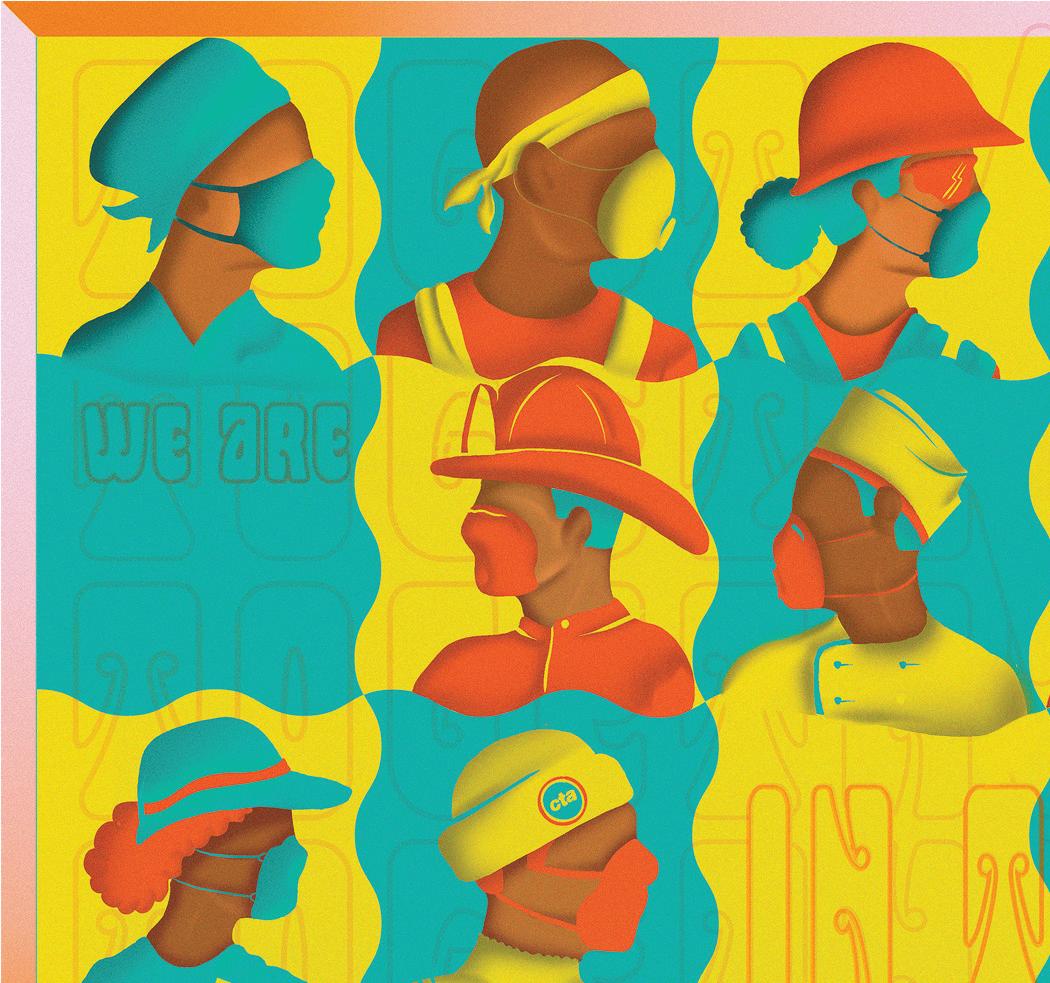

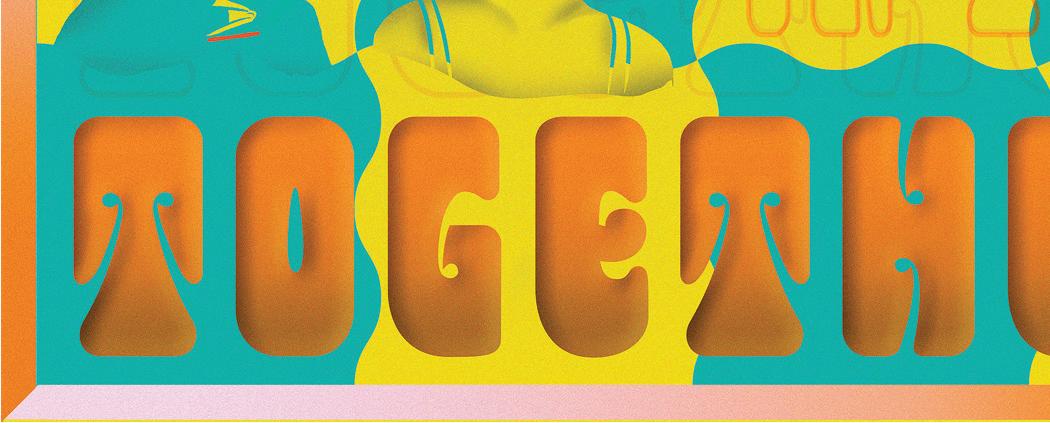
10 CHICAGO READER - MAY 14, 2020 ll









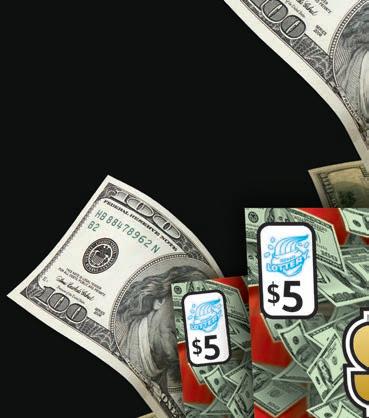


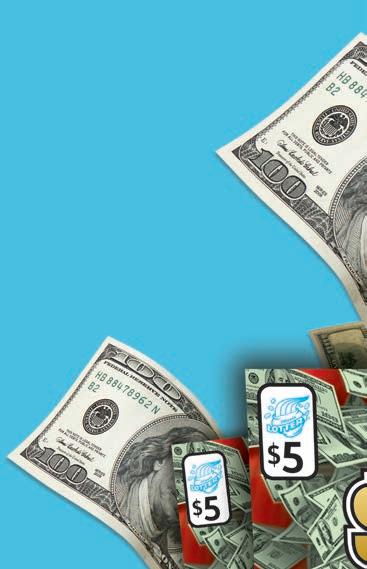
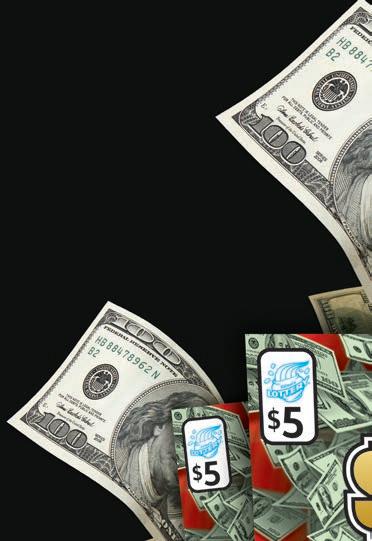









MAY 14, 2020 - CHICAGO READER 11ll STUFF YOUR WALLET WITH $ 500 S OVER $20 MILLION IN PRIZES WIN UP TO $250,000 LEARN MORE AT ILLINOISLOTTERY.COM
Will COVID-19 force us to right racial health disparities?
By MAYA DUKMASOVA
As the novel coronavirus pandemic takes an ever-increasing toll on the United States, it’s now widely publicized that COVID-19 deaths haven’t been experienced evenly across all segments of the population. Across the country, Black people are dying from the disease at disproportionately high rates. One of the first researchers to identify the severity of this trend was Dr. Clyde W. Yancy, chief of cardiology at Northwestern University’s Feinberg School of Medicine. Yancy has studied cardiovascular health disparities for decades and hopes the current crisis will be a catalyst for major public policy and values shifts in our society.
Maya Dukmasova: How did you get to looking at the disparate impact of COVID-19 on African Americans?
Clyde W. Yancy: In my 30-year career as an academic cardiologist, part of my research focus has been evaluating the dissimilarity in cardiovascular diseases and cardiovascular health as a function of race. Over the years we’ve identified a greater burden of cardiovascular risk factors in persons who are African American: hypertension, obesity, and diabetes. These health disparities exist independent of access to health care. The reasons this focus on the presence of risk and disease beyond access to care is so important is because there’s nothing about biology per se that describes this disproportionate vulnerability to risk and the attendant disproportionate consequence of disease. Therefore what we’ve been studying is how the life and living circumstances of di erent groups will lead to greater exposure to risk, greater manifestations of disease.
The COVID-19 experience is just another example of these evident health disparities, but it may be the most glaring example. At this point it’s appropriate for me to interject that my heritage and my race is as a Black American. So a big part of these discoveries
and these conversations is actually personal.
In Chicago, where only about a third of the population is Black, more than half of the people who’ve died of COVID are Black. Has anything caught your eye about how these disparities are playing out here?
It was the recognition of data from the Illinois Department of Public Health that incited the deeper dive that revealed the extent to which these disparities are present. When I first became aware of the data, I paused because it could have been spurious, it could have been unique to Chicago or explained by other variables. But as we studied the data more we recognized that it wasn’t spurious, that it was validated in Detroit and New Orleans and New York. We began to realize that it was indicative of a very painful aspect of this overall crisis.
In your Journal of the American Medical Association article you write that Black people in America experience a “higher burden of at-risk comorbidities.” What does that mean?
In many communities, Chicago included, race defines where home is. That’s important because home determines your life circumstances: what’s the housing density, what’s the access to high-quality education, what are the crime rates, what’s the prevailing socioeconomic status, and in particular what is the access to healthy foods, particularly fruits and vegetables. The aggregate of the things that I just described generates additional risk for the development of cardiovascular disease.
I am a lifelong volunteer with the American Heart Association and we have a practice now of reminding people that zip code may be your greatest risk factor for cardiovascular disease and stroke.
Do you think that seeing this disparity in
the context of COVID data is going to make it more likely that some kind of racial justice remedies are enacted? Why would it be this crisis that would make us more likely to act?
First, this crisis has dramatically highlighted not just the presence of another disparity but the extent of this disparity. COVID-19 has removed the Band-Aid from our health disparities environment and demonstrated how deep the wound is. [The] second thing is that the loss of life, the human toll involved here, is compelling. I believe that in a civil society there’s a pain point beyond which we are uncomfortable tolerating such disproportionate su ering.
In the JAMA piece you bring up this point about this not being tolerable. What are examples of other major diseases where civil society stood up and did something in the face of disproportionate su ering?
Think about other infectious diseases. We don’t see polio happening anymore because not only did we see scientific discovery [to cure it] but as a society we said we cannot have maimed and injured young adults going into their most productive years. There was a time when we had hospitals just for tuberculosis. We got to a pain point when we said we can’t allow this to be and with scientific discovery and also with public health we did things differently. We got beyond just observing that people have an illness to finally getting to a point where it exited public health and entered public policy. Someone had to initiate an e ort and say it is our will that we won’t live like this. I think there’s now a sufficient rationale to execute the same distaste for disproportionate su ering.
The point of my reference in the JAMA article is to say that I am not targeting a utopian environment. I am suggesting that in times past we have hit thresholds that have incited change. And I think that very quickly we’ve gotten to the same place with COVID-19. The change that it’s incited is to really look at why do we have these disproportionate exposures to risk and in turn these painful and disproportionate burdens of disease? If it does track to this phenomenon of disparate determinants of health, which are largely driven by where and how people live, that’s where opportunity for change happens at the public policy level. Persons like me and my colleagues who are deeply involved in scientific discovery will continue to look for unique
therapies, but to get to where I’d like for us to be, where health equity is a goal, we need the entirety of the population to value health as a primary objective in our society going forward.
The only way we can successfully recover is to have broad subscription to new economic initiatives. We would have to be much more inclusive than ever before by race, by ethnicity, by age, by gender, sex, every categorization you can imagine. If it’s taken all hands on deck to respond to the urgency of the COVID-19 crisis, it will take all hands on deck to restore our economic enterprises. That necessarily means we need to be healthy enough to do so.
It sounds like you’re optimistic about the possibility that this is one of those threshold moments. You don’t think that the fact that COVID victims are disproportionately Black will actually make it less likely that there would be this necessary response? There’s a history in this country of treating problems seen as Black people’s problems as not that urgent.
I’m an optimist. I believe in the resilience of the American spirit and we have a history of standing up and ultimately going in the right direction. This disproportionate su ering is not just experienced by African Americans. When this is all settled it will have touched every family in this country: urban, rural, Black, white. And it would have done so disproportionately, not just based on color, but based on economics, based on access to resources. No person in this country will be able to say they haven’t been impacted, influenced, touched by COVID-19. So I think there would be many more people collectively engaged in moving forward than those that would be resisting.
Are there some specific public health interventions locally that could help right the racial health disparities, both immediately in the context of the crisis and longer term?
I think that when one reduces an issue that is this complex and has these kinds of consequences to a bulleted list we run the risk of being shortsighted and trivial. I think the broad focus is the really right place to start, whether in Chicago or anywhere else. The very first thing that needs to be done is not just an acknowledgement but a commitment to health. Ultimately our health is the only real luxury any of us have and that luxury is shared by far too few people. What’s most important
12 CHICAGO READER - MAY 14, 2020 ll
NEWS & POLITICS
INTERVIEW
A conversation about what the pandemic has made intolerable
is the preservation of our health. The second big point here is recognizing that we don’t all share equitably in access to good health and that collectively we now have a commitment to change.
















The reason I’m avoiding specific steps even here in Chicago is that health is a very local enterprise. In some communities it may truly be because they’re living in food deserts, in others it may be because there aren’t many opportunities to fi nd gainful employment. It may be because of housing, it may be because of education. To try to deconstruct this to a list of items oversimplifies the issue. I think the fi rst steps really have to do with the reality of what we’re facing and the importance of recalibrating what’s necessary here. Once upon a time we thought that freedom was the primary objective. I think right now we need to recalibrate and say health is the primary objective.


Do you think that discrimination against Black people in the medical establishment is becoming more visible as a result of this crisis?

The data tells us that the di erences we see are explained by a variety of factors: factors that we’ve discussed already, like life and living circumstances, factors that go beyond access to care, that deal with how patients receive care. There are phenomena of implicit bias that have to be navigated. It goes to institutions where patients receive care, clinics where patients receive care. Many persons we’re talking about receive local care, and quality metrics in some of those hospitals and clinics are not ideal. It is important to recognize that there are multiple dimensions in these discussions, which do involve volition and how people process public health messages, how people make decisions about lifestyle and living circumstances. But their ability to make those decisions are greatly a ected by their living environments.

Are you seeing anything specific about the way that medical care is administered to African Americans during this COVID crisis that’s troubling you?










What I’m seeing is the exact opposite. In our facilities and the facilities in which I have insight, the medical community has been heroic. They’ve stepped up, they’ve embraced all patients who have presented with COVID-19, they’ve cheered for every success and they’ve mourned over every loss. So I stand stridently



on the side of our health-care workers, in particular our physicians and nurses who really have stepped up and provided color-blind, race- and ethnicity-blind, age-blind care to people facing the most desperate challenge to their health.
From a public policy position we do know that across the country there are certain communities where access to coronavirus testing has been limited and those communities disproportionately have aligned with concentrations of Black populations. That is something that when the smoke settles will need to be looked at very carefully as we do a thorough review of how we responded to this crisis. But we have to be careful. We don’t know all the mitigating reasons why testing was or was not available in certain communities.
In a recent New York Times Magazine article you noted how tragic it was that a traditional Mardi Gras gathering of Black men in New Orleans became a hot spot for the spread of the virus there. Do you have any thoughts about the way the public discussion has been happening around these house parties in Chicago that have been presented as gatherings of young Black people? Are they being depicted fairly?


It continues to pain me that a heritage that I know so well in the deep south, in the heart of Louisiana, was so disproportionately impacted, even destroyed by COVID-19. This exposure happened when there was very little clarity and uniformity in the public health messages.








Where we’re at today is—regardless of the city, regardless of the participants, regardless of the community—the public health messaging is explicitly clear. We’re still being strongly advised to practice social distancing, we’re being strongly advised to wear masks. We’re being strongly advised to practice hand hygiene, clean surfaces, and to report at the first sign of any symptoms. There’s no one, no one in this country that should ignore these public health messages. The pain I expressed over the loss of these men who were simply exercising their right to congregate and to celebrate a tradition that was nearly 100 years old, that pain will be revisited if any group of people under any circumstances ignores today’s very strong public health messages. If I can end my comments with one thought it would be this: People, be safe, listen to the public health messages, and follow those messages accordingly. v




MAY 14, 2020 - CHICAGO READER 13 NEWS & POLITICS
@mdoukmas Dr. Mauricio Consalter has been serving medical cannabis patients since 2015 and is now expanding his practice to include a wider range of treatment options for his patients with intractable chronic pain and mental health disorders. If you'd like more information about adding medical cannabis or infusion therapy into your wellness plan, contact us today! Telemed Available! www.neuromedici.com 312-772-2313 Yourpartnersinhealthandwellness. Providing arts coverage in Chicago since 1971. www.chicagoreader.com Chicago's Free Weekly Since 1971 We Couldn't Be Free Without You— Support Community Journalism
Breaking up in isolation
Three people spill their post-breakup thoughts.
By S. NICOLE LANE
It’s tough enough to go through a breakup without being in the midst of a pandemic, but now partnerships are being tested, some are going virtual, and others are even dissolving. In the time BC (before coronavirus) getting over a breakup may have included going out, surrounding yourself with friends, distracting your thoughts, or even having a one-night stand. Nothing better than getting over someone by getting under someone, right?
As we all know, the present moments have never been so unique. So folks going through breakups—either accelerated by isolation or inconveniently occurring during the pandemic—are having to find new solutions for recovering from heartbreak or simply finding closure.
Dr. Laura McGuire, a sexologist and consultant, says isolation and relationships can be a strain for partners. “Being in any relationship takes time, trust, and communication; adding to that the inherent challenge of not doing dayto-day things together, limited communication and touch, and you have a true task at hand.”

They explain that isolating—separately—is something couples never signed up for. “For those who thought they could see each other every week or month, the future is completely unforeseeable. Lack of physical and emotional contact is not impossible to overcome but can certainly heap on stress, especially during a time when work and living situations are teetering on a thin line.”
K, 26, recently went through a breakup in isolation after a partnership of eight months,
while in isolation. During quarantine, K’s partner came over for a walk and explained that the relationship wasn’t working for her anymore. Their break led to a few follow-up conversations on the phone and ultimately to a final permanent breakup. K was completely shocked by the news.
“I knew she was dealing with some heavy things, but she never before indicated any problems in our partnership,” they explain. “She ended the relationship mostly because she needed time to work through things and address her own mental health and happiness. I imagine stay-at-home gave her a moment to breathe and consider things. She was also unable to meet my needs as I struggled with the beginning of quarantine, which I’m sure influenced her decision to end the relationship.”
For K, isolation has made dealing with emotions easier. They explain that destructive coping mechanisms are more out of reach and they can learn about confronting their feelings instead of running from them. “While I think isolation has helped improve my relationship with myself, I think it complicates how I feel about my now ex-partner. The circumstances of our breakup are incredibly sad and then situated within an incredibly difficult time.
How do I not worry about someone I love? She lives alone, is struggling, how can I be there for her through this extremely precarious time? And do I even want to be?” K says. “Sometimes I feel like I am stuck in the breakup, unable to distance myself from it. Everyone says, ‘Spend time doing things just for you,’ ‘Do things that make you happy,’ but I was already committed to those things before the breakup! I think I would really benefit from going out and meeting new people!”
Dr. McGuire says that while breakups are always hard, “to go through that crash on top of not being able to go out and be distracted by the rest of life—family, friends, events—is something few could ever imagine. We know that isolation and loneliness is one of the most detrimental experiences to the human mind and body so right now any negative experience is exacerbated.”
According to a study published in The Lancet , quarantine is linked to various psychological issues. Emotions like confusion and anger are impacting partnerships and for many people, isolating together or separate has brought to light fears, frustrations, lack of understanding, financial struggles, and much more. Relationship coach and expert Lee Wilson found in a survey that 31 percent of partnerships su ered under quarantine.
But it’s still too early to conduct any real studies on how COVID-19 is impacting partnerships. An article in Psychology Today says that after Hurricane Hugo divorces increased, but after the Oklahoma City bombing divorces decreased. And because COVID-19 can’t be categorized as either of these (natural disaster or terrorist attack), it’s difficult to know the effects of the pandemic on partnerships or divorce rates. However, divorce lawyers are waiting for the impact. Baroness Fiona Shackleton in the UK said that their peak time for divorce is usually over the holidays, when couples are together for long periods of time. She is expecting a similar outcome during the pandemic. In China, divorce rates have spiked, which is something we may expect for the rest of the world.
Krister, 27, and their partner broke up when they were in Chicago and their partner was outside of the country, right before the shelter-in-place order took e ect. “It was a phone call, so more or less I started the breakup already in isolation. We discussed trying to be friends and he suggested we talk more about
14 CHICAGO READER - MAY 14, 2020 ll ARTS & CULTURE
RELATIONSHIPS
ANTHONY
TRAN / UNSPLASH
it when he returned from his trip,” they say. “Unfortunately, COVID-19 struck right after that decision was made, so chances of gaining more closure were slim.”

Krister and their partner dated for almost a year and their friendly texts checking up on each other became harder to deal with while in quarantine. “I made a decision to distance myself more because it was becoming too di cult to pretend I wasn’t hurting every time we interacted. I asked for more space while I was in isolation because it was cyclically dominating my mind.”
Being single and dating during a pandemic can be a bit tricky, as in-person meet ups are not recommended. So being single and going through the loss of a companion can be especially difficult. The future may look bleak to those who can’t plan or think far into the future. With no real end in sight for the pandemic, being alone can make things lonelier. Emotions are also heightened. People are feeling collective, overwhelming anxiety. Questions regarding our personal health, our partners’ health, our friends’ and family’s health, are all stressors in our minds.
The folks that talked to me for this article were able to achieve physical distance from their partners. However, some folks aren’t so lucky and live with their partners. The stay-athome order has disrupted the standard longterm breakup. People are sharing kitchens with their exes, some are still sharing beds.
Buzzfeed reporter Julia Moser shared her experience of being dumped over Zoom, the video-conferencing app, in her childhood bedroom during isolation. “The breakup was about as humiliating as you would expect,” she writes. Overall, Moser admits she feels miserable but is grateful she wasn’t ghosted or gaslit (something that could very easily be done in times of isolation). Virtual breakups will definitely be another awkward and hard reality for people isolating away from their partners.
In many ways, isolation was exactly what Krister needed. They explain that they needed to relearn a love for themself outside of another person. However, that took some time. “Not having my friends and family around to hear me out was hard. All I wanted to do was vent, and it felt like a burden to call or text a novel of feelings rather than passively rant over a cup of co ee or a drink. I luckily have a roommate and they have been super supportive, especially because they exited a relationship a few months earlier.”
Working on house projects, building furniture, caring for plants, painting, and

drawing have all become part of Krister’s daily indulgences. “I also tried to journal a bit and expel some negative thoughts through some personal rituals; any form of self-care I could think of (including flirting with strangers) was a great escape from the breakup and the impending pandemic. Animal Crossing has been a lifesaver!”
Other than a “happy birthday” text, Krister and their ex haven’t spoken recently. Damiane, 26, is in a similar situation. More than two weeks ago, he and his partner decided to call it quits after six months, when they chatted face-to-face about larger issues in the relationship. The two haven’t spoken since their split. He says those concerns were “inflated by the current circumstances,” and although it was tough, the “quarantine brought things to the surface.” Damiane and his partner were still getting to understand one another. He says, “Isolation definitely can act as a pressure cooker, and at times I could feel it breaking down the sinew of the relationship, but the issues were always present.”
For Damiane, he says that having a partner during the pandemic is “immensely helpful,” so the breakup was bittersweet. While isolation has compounded sad emotions for Damiane, it’s also been a good time for reflection. “It is always hard to transition from being with a partner, but in this case [isolation] makes it a bit easier to create the physical distance that’s necessary for closure.” He says he’s been busying himself by watering his plants. “It’s spring and growing season is coming up, so lots of propagation.”
While isolation is tough, it’s been a rewarding time for people to invest in themselves and their self-interests. Whether you’re in a relationship or not, spending time alone and reflecting on what activities make you happy can establish growth for future friendships or relationships.
Dr. McGuire agrees that folks going through a relationship change should focus their energy into things that they love. Right now can be a good time to look inward. “FaceTiming with someone who makes you laugh, teaching yourself a new skill, spending long stretches of time reading, or creating things that allow you to release emotion are all tools for healing,” they say. “Above all, go easy on yourself; it is not like you can ask your mom how she survived a quarantine breakup. We are all learning as we go and a wide range of feelings and experiences with all of this is normal.” v
MAY 14, 2020 - CHICAGO READER 15 ARTS & CULTURE
@snicolelane
One murder, four years, no answers
By MAYA DUKMASOVA
We’ve heard both versions of the story too often, tragic trajectories that begin with being a young Black man in Chicago and end in murder, either by police or by somebody else. In March 2016, as the city was reeling from the Laquan McDonald scandal and entering what would be its bloodiest year in two decades, 22-year-old Courtney Copeland wound up with a bullet in his back in front of the 25th District police station in the Belmont Cragin neighborhood, on the northwest side. He was shot as he was driving his BMW late at night to see his girlfriend. He spent his last moments trying to get help from the cops at the station, who handcu ed him and treated him like a suspect, leading to precious minutes lost in getting him potentially lifesaving medical care. It took his mother four years and a collaboration with journalists to figure out what happened that night—a story that police were in a position to put together within days of the murder.
Somebody is a new podcast about what Copeland’s mother, Shapearl Wells, had to endure to get answers from the Chicago Police Department. It’s a series that not only establishes narrative justice for her son—who she felt was misrepresented in scant prior media coverage—but o ers a close look at the carelessness and incompetence with which this murder investigation was handled and how the department treated the loved ones of the victim and
the community where the violence happened. The podcast was produced by Invisible Institute reporter (and sometimes Reader writer)
Alison Flowers and StoryCorps producer Bill Healy, but it’s unique in the true crime genre for Wells’s involvement and centrality to the story. She’s the host and narrator of the show, and she has led the investigative work that should have been done by police.
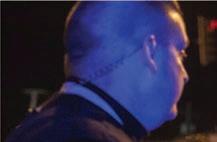
Wells says she contacted the Invisible Institute for help after reaching a dead end with her own e orts. She wasn’t able to get answers from detectives, no arrests had been made, and given the circumstances of the murder, Wells suspected a cop might have killed her son.
“I was at my wit’s end, I had exhausted all my options and I knew I needed to enlist some help in order to dig deeper,” says Wells. “I felt that having someone else to add pressure to CPD would definitely increase my chances of getting to the bottom of what happened.”
The podcast producers ultimately filed about 100 FOIAs, obtaining video, documents, and police records that CPD had told Wells didn’t exist. They interviewed dozens of witnesses, including people who’d never heard from the cops even after reporting relevant information. They identified the location of the shooting and three suspects. The podcast includes recordings of Wells’s conversations with detectives that reveal o cers who are dismissive and defensive, seemingly more concerned with their
authority being challenged than solving the murder. What’s more, the attitude of the police doesn’t change even when another person is murdered in a BMW in the same area more than two years later, likely by the same people.

“What I learned is that the reason why Chicago’s murder solve rate is so abysmal is because there’s not a lot of e ort done in finding the killers that are out here plaguing our community,” Wells says. “I felt that because I was doing their job for them they felt o ended during my interactions with them. But I shouldn’t have to do what they’re getting paid thousands of dollars to do, that’s their job. If you’re not investigating these cases, what are you doing?”
CPD’s murder clearance rate is among the lowest in the nation, and it’s even worse if the victim is Black. Between January 2018 and July 2019, for example, the police solved 47 percent of murders with white victims, and just 22 percent of those with Black victims, according to data reported by WBEZ. Usually, o cials blame investigators’ failure to solve cases on lack of community collaboration. Somebody tells a starkly di erent story.


“Certainly there is a lack of trust and a lot of Black people feel that the police is an occupying





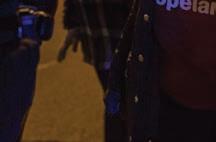

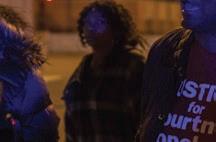

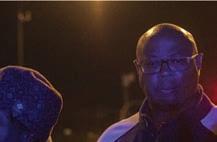
force in their neighborhoods,” Flowers says. “But in this case, what the detectives told us was ‘We tried and people in the neighborhood just aren’t talking.’ And we found the opposite. All of this could have been known within days. The people who gave us this evidence were willing to talk to police . . . Everything that [the police] did was incredibly superficial, there was sloppy follow-up, and ultimately just a really shallow investigation.”
No one’s been charged with Copeland’s murder to this day. CPD has reclassified the murder as a “cold case” and still advertises it on their social media—citing the wrong neighborhood and cross streets for the incident. Wells still wants justice, but she knows it likely won’t come through the courts. She hopes that the podcast will, at the very least, impact protocols and operations among Chicago’s emergency responders (such as handcu ng a person who’s been shot), so that victims of violence don’t wind up being treated like they’re nobody. Somebody is available on all podcast platforms. The final episode drops on Tuesday, May 12.
16 CHICAGO READER - MAY 14, 2020 ll
v @mdoukmas ARTS & CULTURE
PODCAST
A mother takes to podcasting wondering if CPD did “a cover-up or are they just this damn incompetent?”
Shapearl Wells speaking with CPD offi cers COURTESY BILL HEALY CHICAGOREADER.THREADLESS.COM CHICAGO READER MASKS
‘Shukran Bas’ flips the appropriation lens

MENA artists critique stereotypes in a send-up of “Thank U, Next.”
BY YASMIN ZACARIA MIKHAIEL
“Put down the brownie batter hummus and slowly step away from the culture.”
This command welcomes us into the pointed and poignant community-produced music video (Means of Productions) that is “Shukran Bas,” a parody of Ariana Grande’s breakup anthem “Thank U, Next.” In this five-minute masterpiece, we find much that is salty and sweet, just like the aforementioned hummus snack.
The music video dropped on Wednesday, April 29, after much anticipation. Director and creator Arti Ishak assembled a fierce team of collaborators to create opportunities “for younger artists to grow, try things they haven’t been given the chance to, and prove they are brilliant and capable of pushing the needle forward.”
This needle points towards widening the scope of Middle Eastern and North African representation in media. All too often, roles for our community of Brown artists consist of racist caricatures and hastily written cultural stereotypes. With this artistic endeavor, Ishak and her team take up a troubled legacy and advocate for authenticity and space-making through Ariana Grande’s own problematic lens.
As an avid cultural appropriator herself, the
Ariana Grande aesthetic proved an effective way into the issues of misrepresentation and erasure that MENA artists battle with about every project they sign on to. Ishak notes, “Ariana Grande is one of the white women most famous for appropriating Black and Latinx culture for profit and it just felt right to steal something back while making a critique about brownface. I mean, I hate the original message but you gotta admit that song is a bop.”
With Grande’s original music video for “Thank U, Next,” she mashed up four major films including Mean Girls, Bring It On, 13 Going on 30, and Legally Blonde. What these films have in common include reclaiming of femme power, solidarity between friends, and comingof-age narratives. When looking at “Shukran Bas” (which loosely translates from Arabic to “thank you, stop” or “thank you, but” depending on context), it’s clear similar sentiments are evoked when applied to the MENA media landscape at large.
“The movies [Grande] emulates [. . .] are also famous coming-of-age romantic comedies that people of color were excluded from or used as props in,” Ishak notes. In a sense, “Shukran Bas” is a means for Middle Eastern artists to come into their own power as they’ve fallen in
Still from “Shukran Bas” COURTESY ARTI ISHAK
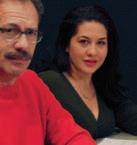
and out of love with industries either refusing or unequipped to hire their whole selves.
Like the plentiful Easter eggs present in Grande’s “Thank U, Next,” “Shukran Bas” includes its own treasures, ones that are more robust, endowed with deep cultural meaning.
The music video opens mirroring the confessional style found in Mean Girls, wherein characters are sharing hot goss and rumors around Regina George. In “Shukran Bas,” these opening moments shout out MENA politicians, celebrities, and activists who’ve rejected brownface or stepped up as activists.

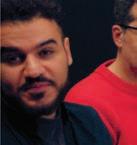
“I saw Rashida Tlaib run for public o ce, so I ran for public o ce.” (Sidenote that the U.S. representative “liked” the video.)
“I heard Rami Malek refused to play a terrorist, so I refused to play a terrorist.”

Lines like these are heartening examples that seemingly small actions set big precedents. In interviews with cowriters Ishak, Gloria Imseih Petrelli, and Martin Zebari, they recall the birth of the concept this past November and the luckiness of a pre-COVID-19 wrap in February.
According to Ishak, “‘Shukran Bas’ was not a random occurrence. It was a culmination of a series of events that our Middle Eastern theater community, affectionately referred to as #TeamHabibi, planned for the start of 2020.” From a reading of Omer Abbas Salem’s new play Mosque4Mosque (which changed venues three times as it oversold) to a MENASA MidWest forum at the Steppenwolf Garage, this community has been organizing, as Ishak notes, to “problem solve and cultivate solutions with the aim of seeking more accurate and nuanced representation.”
When the bop kicks, Salem embodies Regina, lounging lavishly and donning pearls in a bedroom of deep pinks and reds. He’s accompanied by his pup Moudi, showing much solidarity as Salem flips through the iconic Burn Book. He lip-syncs:
“Thought I’d end up in film, but it wasn’t a match. Got my hopes up with theater, and now I watch it and laugh. Even tried to do TV. Homeland got canceled.”
Ishak pointed out that this scene includes an homage to The Arabian Street Artists, who were hired to graffiti “certain phrases on the walls to add authenticity but actually tagged the set of the show’s series finale with gra ti in Arabic that read ‘Homeland is racist.’”
Beats later, Salem struts in a fur coat down a high school hallway flanked by Petrelli and actor Sahar Dika. He snags a keffiyeh from a
THEATER
white student and tosses it to Petrelli, who is of Palestinian heritage. This scarf is usually worn as an act of resistance, and Salem’s small act of reclamation defies its appropriation as a cutely patterned accessory. Snippets of racist Hollywood imagery about MENA people and cultures are spliced in throughout.
In an interview, Petrelli says, “Collaborating on writing these lyrics was a dream. All of the scenes of our not-so-imagined Brown and blended future are really special to me. We weren’t just staging a table read with a room of our community—we are manifesting it. We aren’t just doing dabke with our friends—we are inviting our communities and allies to join hands and learn from one another.”

Similarly, this music video created opportunities for young artists to experiment with new roles in production. Zebari was brought on as a cowriter but found more joy in assistant directing. (Lowell Thomas II served as cinematographer and editor.) “I had no experience as an assistant director before, let alone one for a music video. Step by step, we figured out a rhythm, did what we felt was right and invited exactly the right people who helped make this dream a reality.”
Of course this labor of love involved a ton of labor. Means of Productions is a company based in New York with a small and mighty arm in Chicago. Ishak had prior experience with them and found Means of Productions stellar collaborators in making space for people of color. Interestingly enough, some of the critiques made in “Shukran Bas” reared their head in this part of the process. The music video includes a scene on casting with the auditors all being predominantly white-passing men. With Means of Productions also being a majority white company, they raised the question if they were the right team for this project. Ishak notes, “It was an opportunity for [Means of Productions] to examine their own structures and how to move forward making sure the right voice steered.” This music video not only called for more intentionality in process, but manifested it in the making of the project.
Too often Middle Eastern representation is erased from conversations centering equity and visibility. But with “Shukran Bas,” MENA artists are demanding not only to be a part of the discourse but also viewed as leaders actively working to better the field.
“My tongue’s been held, till you called it diversity.” Middle Eastern artists will not be sitting on the sidelines. v





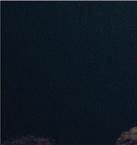
MAY 14, 2019 - CHICAGO READER 17
CULTURE JAMMING
@yasminzacaria
PERFORMANCE

Circus in quarantine
Alo Circus Arts and Actors Gymnasium take their shows online.
By KERRY REID
Flying high and fearlessly in front of awestruck spectators is what circus is all about, right? So what happens when your show is grounded, so to speak, by COVID-19? On Saturday, two longtime Chicago circus arts training and performance centers show how they’ve adapted their art for the new normal, where we all feel like we’re working without a net.
Aloft Circus Arts o ers Sanctuary in Place! Volume 4, in which an eclectic array of performers—some from the Aloft ensemble, some from out of town—perform live from their homes for a “Zoom-enabled circus show”—as the title implies, the fourth such online offering Aloft has produced since the shutdown. And Actors Gymnasium has transformed their planned live show for their annual Spring Youth Circus into Isolated, rehearsed online and recorded by the 28-member ensemble from their homes and then edited into streaming video.
For Shayna Swanson, who founded Aloft in 2005, these virtual shows have an ironic backdrop. After a long and expensive process,
Aloft’s home—a former church in Logan Square whose high ceilings are ideal for trapeze and other aerial arts—finally received the coveted Performing Arts Venue license, or PAV, from the city. And then the coronavirus arrived.

ISOLATED Sat 5/ 16 and 5/23, 7: 30 PM, facebook. com/ActorsGymCircus; free, but donations welcome

SANCTUARY IN PLACE! VOLUME 4 Sat 5/ 16, 8: 30 PM, facebook.com/ aloftcircusarts; for a pay-what-you-can donation, patrons will receive an invite to stream the live show.
“The timing was a little rough,” says Swanson. “We worked for a long time, and it was really expensive, and we did one show and it was over. It’s so crazy. You know, we could have not gotten it and kept having shows for under a hundred people for a donation, right? And now as we hear about what things will look like as they start to open back up—‘you’ll be able to
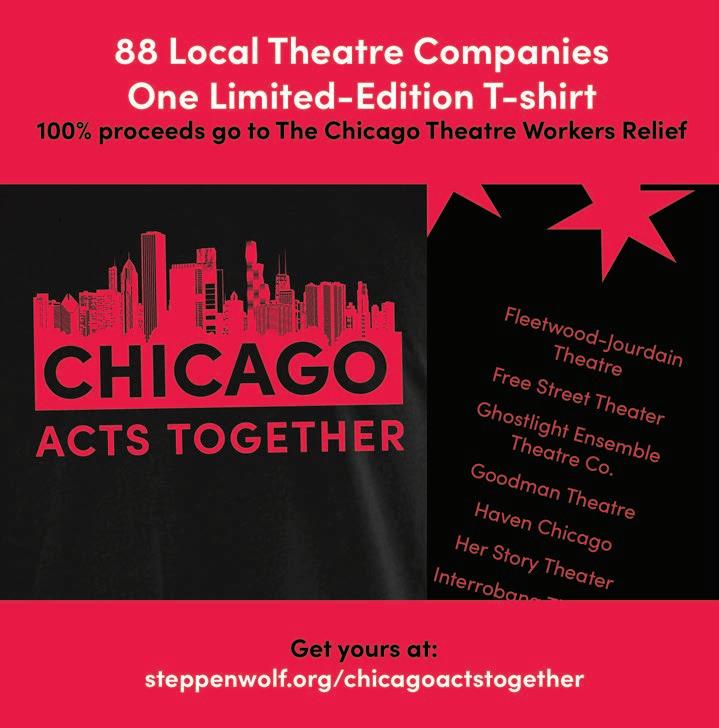
18 CHICAGO READER - MAY 14, 2020 ll
THEATER Don’t miss an issue Get the Next 12 Weeks of the Chicago Reader Delivered to Your Home CHICAGO’S FREE WEEKLY SINCE 1971 MARCH 26, 2020 STAY AT HOME chicagoreader.com/support
Alo Circus Arts COURTESY ALOFT
have gatherings with 50 people’—I think ‘we could have just done that.’”

Sanctuary, a cross between a punk cabaret and circus, has been a staple showcase with Aloft for a while, so taking the show online made sense to Swanson. But that doesn’t mean there hasn’t been a learning curve. “We’re not technological people really by nature. We’re very tactile. We spend our time training our bodies to do hard things and we don’t spend a lot of time on computers. We’ve put in more time tech rehearsing this show than we do rehearsing a regular show,” she says.
The aim is for all the segments to go out live in real time. The only exceptions, Swanson notes, would be if bad weather prevented a live outdoor act from happening. And she doesn’t really curate ahead of time. “I don’t actually know what people are going to do until the show is happening. I don’t ask them to send me what they’re going to do beforehand. I like to be surprised. I am picking people I know make quality work, so I’m trusting what the output’s going to be.” And though the online show is
available on a donation basis, Swanson says Aloft has made enough to pay performers the same rate they would receive for the live show.
For the 25-year-old Actors Gymnasium, housed in Evanston’s Noyes Cultural Arts Center, going online was a way to celebrate the achievements of their youth ensemble. But the focus of Isolated changed once the shutdown happened. Director Kasey Foster says, “The original idea was to show how much being on our devices can take away from the world in front of us or the world around us.”
Now, of course, she has an ensemble of middle school and high school students who are more tethered than ever to their screens for online learning.
The show includes monologues about isolation as well as a variety of circus acts. Of necessity, many of these acts had to change from the aerial arts to other skills, such as acrobatics, juggling, or unicycle. Foster notes, “I keep telling this cast that 99 percent of the population doesn’t know how to do any of the things that you know how to do with your bodies.”
Actors Gymnasium founder and artistic director Sylvia Hernandez-DiStasi also worked
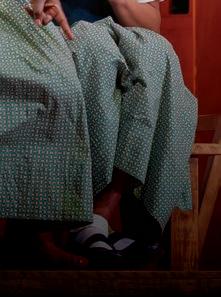
with the youth ensemble on the show. She says, “I have to tell you, I am not a big fan of watching stu online and rehearsing online and staring at a screen all day.” But she and Foster both note that they and the ensemble leaned into the “glitchiness” of working with Zoom and the inevitable lag times and technical di culties that come along with it.
Says Hernandez-DiStasi, “I think that what art is about is being creative and making things happen and being flexible.” She also notes, “The apparatus is fun, but the fundamentals of knowing how to use your body is something that gets glossed over because the kids get so anxious to fly through the air, which is what everybody wants to do.”
Foster notes that not all the material in Isolated is melancholy, though the students in the show, like students everywhere, are mourning the loss of rituals such as graduation and prom, and just being able to see their friends every day. She mentions one monologue by a member of the ensemble that “started with she’s so angry and frustrated. All this time, all these years she’s put in at trying to be the best she can be and it comes to nothing, just a little piece
of paper in the mail or something. But then halfway through she realizes that it’s all just an illusion and we can work as hard as we want, but it’s never accomplishing what we think. It was just super Zen.”
Both Aloft and Actors Gymnasium are o ering online circus arts classes during the shutdown as well, and both groups say that even once they can go back to teaching and performing live and in public, the online components will remain. Swanson says that one of the advantages for the virtual Sanctuary show is “we can have performers from all over the world, and we have.” Both she and Hernandez-DiStasi also note that going online has reconnected them with past members of their ensembles.
And by going online, Aloft and Actors Gymnasium keep the ghost light for circus arts burning until they can all meet again under the silks and trapezes. Says Hernandez-DiStasi, “If art goes, everything goes. So it’s really important to keep it going and keep supporting it. It really is what is getting people through this time.” v
@kerryreid
By Jocelyn Bioh, Directed by Lili-Anne Brown
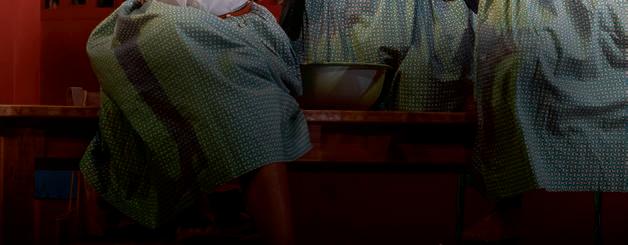










MAY 14, 2019 - CHICAGO READER 19
THEATER
NOW ONLINE!SCHOOL GIRLS; OR, THE AFRICAN MEAN GIRLS PLAY
Extended by popular demand through May 31 Stream this “first-class production of a first-class play, performed by an ensemble of women actors that I can’t imagine being bettered” (Wall Street Journal). GoodmanTheatre.org/StreamSchoolGirlsMajor Corporate Sponsor Corporate Sponsor Partners
A
By BEN SACHS
farewell to Odd Obsession
When I started volunteering at Odd Obsession Movies as a 23-year-old in early 2006, the store was in its first location on Halsted Street, sitting snugly in a basement storefront opposite the Steppenwolf Theatre. I discovered the store by accident before going to a play one evening, and after that, I began stopping in about once a week. I couldn’t resist the lure of movies that, until then, I’d only dreamed
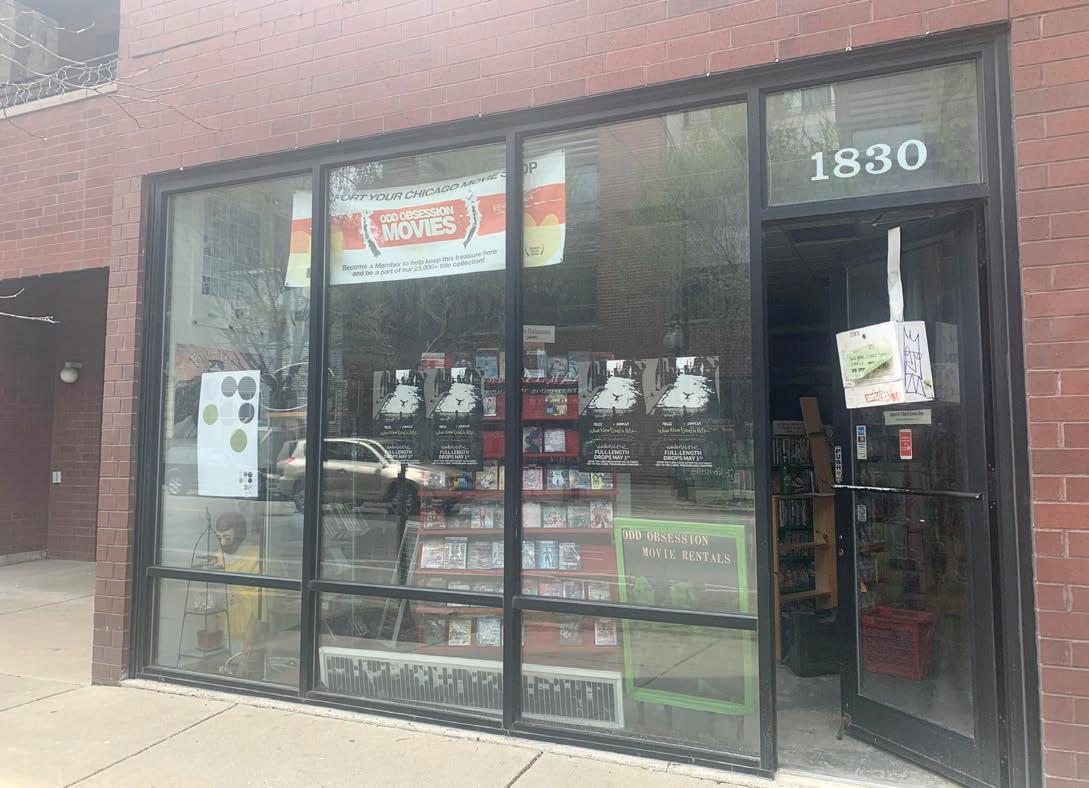
of watching: video works by Jean-Luc Godard never released on Region 1 DVD, features by lesser-known directors of the Japanese New Wave, hard-to-find cult classics like Stephanie Rothman’s The Velvet Vampire (1971) and John Byrum’s Inserts (1975), and experimental films by the likes of Andy Warhol, Pat O’Neill, and Rob Tregenza. And then there were all the movies I hadn’t even heard of; I wanted to spend hours in the store just
browsing the collection.
As I became a regular customer, I got to know the store’s founder, Brian Chankin. (He was almost always there in those days, as the Halsted location doubled as his home.) We found we had similar tastes. Neither of us gravitated towards mainstream cinema, though we both liked lowbrow as well as highbrow films, and we were especially drawn to movies that fused the two. Brian had
named the store after a wacky widescreen comedy about voyeurism made by renowned Japanese auteur Kon Ichikawa in 1959; he also liked fi gures like Ken Russell, Brian De Palma, and Andrzej Żuławski, directors who obliterated distinctions between respectful and disrespectful art. I liked swapping movie recommendations with Brian, who was and still is a top-notch conversationalist. Indeed many of my favorite memories of Odd Obsession—which announced last week it was shutting down after 16 years—involve talking with Brian and a few strangers, typically about movies and always with enthusiasm.
I admired Brian’s dedication and ambition right away. Here was someone not much older than me whose curiosity about cinema drove him to amass thousands of videocassettes and DVDs, then to open a rental store where he could share this collection with others. (Later on, Brian would bring a similar autodidactic zeal to being a reggae DJ and selling Ghanaian movie posters.) His appetite for movies was infectious. Within months of opening the store in 2004, Brian had attracted customers who, like me, liked being there so much they just started shelving DVD cases and ringing up customers. The stable of volunteers that formed at Odd Obsession shared in its mission to spread the love of movies; in exchange for a few hours of easy clerical work, we got to share our tastes with customers and learn from them and each other. We also impacted the store’s development in other ways, such as recommending titles to add to the collection or naming a section in the rental area.
One particular volunteer expanded my curiosity about fi lm history to areas I never thought I’d go. I met Joe Rubin around the time I started volunteering. Joe was still in his teens, but he’d already attracted national attention for his knowledge of exploitation and hard-core movies of the late-60s through the mid-80s. He was instrumental in building the store’s collection; with his input Odd Obsession cultivated a trove of rare drive-in horror movies, juvenile delinquent dramas, ambitious hard-core features, and the occasional films that managed to combine several of these subgenres. Joe appreciated all of this with a seriousness I’d previously reserved for art cinema alone; his infl uence could be felt in Odd Obsession’s layout. Have there been any other video stores that organized their
22 CHICAGO READER - MAY 14, 2020 ll FILM
Odd Obsession’s fi nal storefront
COURTESY
JOSH BROWN
ESSAY
fond
Remembering the people and films that made the video store special.


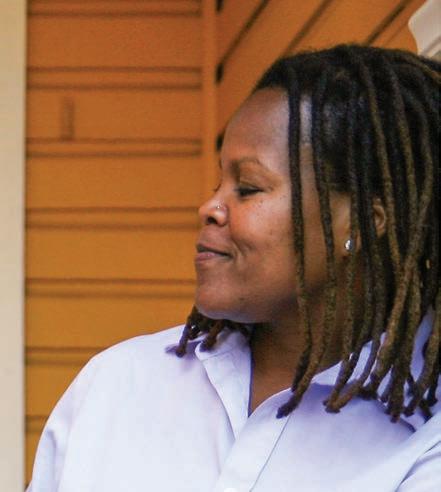

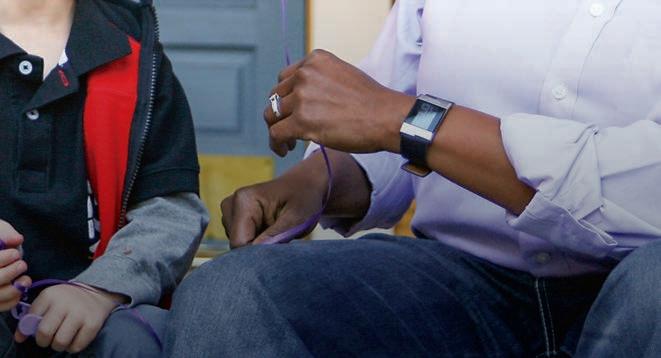

MAY 14, 2020 - CHICAGO READER 23 BE COUNTED. 2020 CENSUS Your par cipa on matters. Questions about the 2020 Census? We have answers. Text us your questions to 987987. Complete your Census form online: my2020Census.gov
porn films by director? Joe taught me to recognize the creative visions of people working with the least reputable material, people like Chuck Vincent and Doris Wishman. Joe now runs the DVD label Vinegar Syndrome, which restores and rereleases vintage exploitation fare; it’s a bit like everyone can sample Odd Obsession’s exploitation section now.
I made other great friends through the store, whether customers or fellow volunteers. The list would be too long to present in full here, but deserving special mention is Darnell Witt, who started a free cine club at his loft showing rare movies, many rented from Odd Obsession, around the time I started volunteering at the store. In 2007 several people who attended these screenings started the website Cine-File.info (now CineFile. info), where I first started writing about movies and where I continue to contribute today. A lot of the writing that appeared on the site in its early days feels like it grew out of conversations that happened at the store; even

though Brian never contributed, I feel like he influenced the site’s policy of not publishing negative reviews. The attitude fostered by Odd Obsession was inclusive—André Bazin’s dictum “All films are created equal” could have served as the store’s motto.

Instead the words hanging in the doorway at the Halsted location were “This is not a porn store.” Odd Obsession attracted cinephiles, but it attracted plenty of weirdos as well. On one of my first days behind the counter, a middle-aged man walked in and asked if he could find “any porn, but, like, with Frankenstein.” After Brian answered that he could (the movie was The Erotic Rites of Frankenstein , directed by Jess Franco in 1972), the customer followed up by asking whether there was “any porn, but, like, with vampires and they’re all lesbians.” (The lucky customer also left that day with Vampyros Lesbos , directed by Jess Franco in 1971.) You never knew who would come in to Odd Obsession, which was an added bonus of volunteering there.
Brian moved Odd Obsession to Bucktown in the late 2000s, fi rst to a spot next to Uprise Skateshop, then to a slightly smaller storefront a few doors north on Milwaukee Avenue. The clientele became less seedy, but the store remained colorful. The 1822 N. Milwaukee location had high ceilings, and Brian hung art and movie posters all over the plentiful wall space. One of Brian’s cats, Precious, began to live in the store; her curmudgeonly attitude endeared her to customers, even though she hissed at babies and occasionally shat in the aisles. At some point the merry video makers from Everything Is Terrible! started using the front of the store as a workspace, while the large garage-cum-storage space in the back got used as the set of at least a few amateur short fi lms, one of them being a music video for my old band. When Brian began selling hand-painted movie posters from Ghana, he’d always display some around the rentals. I stopped volunteering regularly a couple years before Odd Obsession moved to its third
and final location. Other volunteers came and went, other friendships formed. I continued to stop in often after I began to write for the Reader full-time; there was always some movie I needed to watch for research that I couldn’t find anywhere else. I also kept up the habit when I entered grad school and then my current career as a special education teacher; by that point, Odd Obsession was simply a hub in my personal route of the city, a place where I could catch up with a friend or fi nd something interesting to watch after a long week at work. I’m sad that I won’t get to visit it again after our current period of quarantine ends. Other people have expounded on what we lose when we lose video stores—namely, the pleasure of browsing a physical collection and the interpersonal connection that comes with swapping movie recommendations—so I don’t need to do so again. But something distinct seems to be leaving Chicago with the closure of Odd Obsession Movies, a certain omnivorous aestheticism that brings people together. v
24 CHICAGO READER - MAY 14, 2020 ll FILM
continued from 22 Now, more than ever, we all need HOME HEALTH HOPE Learn how you can support Thresholds and help keep our clients safe and strong. www.thresholds.org
NOW PLAYING








R Castle in the Ground


Castle in the Ground is a somber if not sober look at America that immerses viewers into the bleak reality of the opioid epidemic. A er the untimely death of his mother, Rebecca (Neve Campbell), Henry (Alex Wolff ) befriends his charming but unsettled neighbor Ana (Imogen Poots). Poots imbues Ana with an appeal anyone would be hard-pressed to ignore, let alone the younger, guilt-ridden and grief-stricken Henry. Soon, stressful situations abound due to the pair’s shared drug dependency. While Henry’s is fledgling, Ana always seems to be one use away from her last, creating the same sustained tension that scouring the neighborhood for your next fix might. Poots’s ability to transfix paired with Wolff ’s affecting performance makes it impossible to opt out before a conclusion. But, much like the similarly themed Ben Is Back, the mood remains melancholy, and viewers are le in the dark about the protagonists’ ultimate fates. —BECCA JAMES 105 min. In wide release on VOD starting 5/15

R Fourteen
































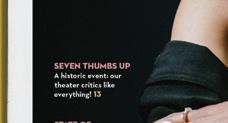








Much like Olivier Assayas’s Non-Fiction (2018), this latest romantic comedy from French writer-director Cédric Klapisch examines the implications of technology in connection to modern life. Unlike Assayas, however, Klapisch has seemingly little to say beyond worn-out aphorisms. The film follows Remy (François Civil) and Mélanie (Ana Giradot), two hapless Parisians who live in adjacent buildings and whose lives unwittingly intersect until a predictable conclusion brings them together.








Remy is a disaffected warehouse worker grappling with loneliness and guilt as a result of childhood trauma; Mélanie, a self-conscious research assistant, contends with post-break-up heartache and tension within her family. Both characters start to see therapists, who are also shown to be connected. The conceit of following two discrete characters might have been interesting, but here it seems merely a gimmick—and one rendered as tweely as possible, no less. Klapisch presents the characters’ alienation as the result of society’s dependence on social media and dating apps, a tenuous argument that adds little to the sentimental plot. In French with subtitles. —KATHLEEN SACHS 110 min. 5/15-5/21, Gene Siskel Film Center From Your Sofa




A White, White Day



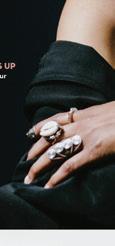
—KATHLEEN SACHS 94 min. Music Box Theatre


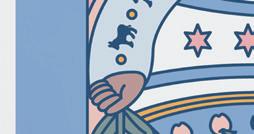
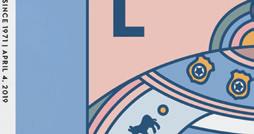









The fi h feature by critic-turned-filmmaker Dan Sallitt explores the lifelong friendship between two fledgling Brooklynites, Mara (Tallie Medel from the director’s previous film, The Unspeakable Act) and Jo (Norma Kuhling). Mara, a teacher’s aide, writes on the side, while Jo, a social worker, has difficulty keeping a job; both date several men over the film’s unspecified timeline. Eventually Mara gets pregnant and has a child, while Jo’s life devolves due to her substance abuse and mental health issues. Where French auteur Eric Rohmer was the primary point of reference for Sallitt’s earlier films, here one feels the influence of another French auteur, Maurice Pialat, in the use of ellipses to move the story, and thus the characters’ lives, forward. Sallitt once remarked that “[f]ilming two people sitting in a room talking is the ultimate in cinema.” This film finds Sallitt moving around perhaps more than ever, tracking his characters across the screen as well as over the years, but the sentiment continues to resonate. Sallitt’s clipped dialogue and his direction of actors also remain strong.



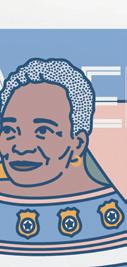
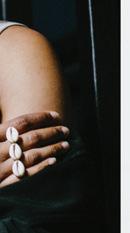

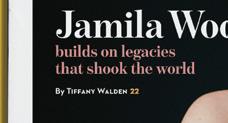
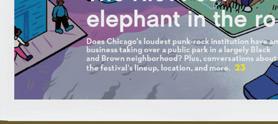

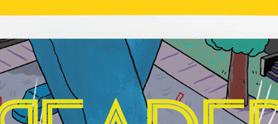




Virtual Cinema
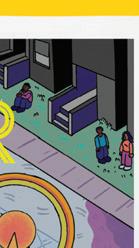
Someone, Somewhere




This simmering Icelandic drama opens with a car accident that leaves brusque, off-duty police chief Ingimundur (Ingvar Sigurðsson) a widower. The plot thickens when, going through his late wife’s possessions, he discovers that she had been having an affair. Despite having close relationships with his remaining family members— specifically his young granddaughter, Salka (Ida Mekkin Hlynsdottir), whose presence provides much-needed levity for both Ingimundur and the audience—the chief becomes obsessed with discovering the truth about his wife and exacting revenge on her affair partner. As a study of grief, writer-director Hlynur Pálmason’s sophomore feature lacks any significant insight, but there’s still something about it that intrigues. It’s slow, but genuinely so, not in any frustratingly self-aware way. It also looks amazing, its eastern Icelandic setting—complete with picturesque mountains, a placid sea, and, in fitting with the film’s title, lots of cloud-like white fog—a sight to behold. Furthermore, Pálmason elevates what might otherwise have been rote art house fare with some earnestly realized nonnarrative techniques. In Icelandic with subtitles. —KATHLEEN SACHS 109 min. 5/15-5/28, Facets Virtual Cinema

MAY 14, 2020 - CHICAGO READER 25 FILMGet showtimes and see reviews of everything playing this week at chicagoreader.com/movies R READER RECOMMENDED b ALL AGES N NEW F
Fourteen Providing arts coverage in Chicago since 1971. www.chicagoreader.com in partnership with to add your event to TIXREADER.COM, email mroeder@chicagoreader.com MAY 16 Summer Slushies: Frozen boozy slushies @ Online, Make & MuddleSAT MAY 23 Tiki Talk @ Online, Make & MuddleSAT JUNE 6 Naperville Soulfest 2020 @ Naperville SettlementSAT MAY 16 Sophia Lucia’s Freak Show Cabaret (EVENT REPEATS WEEKLY) @ OnlineSAT MAY 21 Changing Worlds Annual Benefit 2020 @ Online, Changing WorldsTHU MAY 17 Virtual Boozy (GREEN) Brunch with Belinda and Matt @ OnlineSUN JUNE 6 Purpose & Passion Tour 2020 @ Online, Eboni Montsho IgnitesSAT
By LEOR GALIL
Jabari “Naledge” Evans expected to spend April in a Chicago recording studio with Michael “Double-O” Aguilar, his partner in hip-hop duo Kidz in the Hall. They met in 2000 while studying at the University of Pennsylvania and formed the group in 2004. Their 2006 debut album, School Was My Hustle, came out on respected indie label Rawkus Records shortly before its demise; the duo’s next three albums, ending with 2011’s Occasion , were issued by Duck Down Records. Since then Kidz in the Hall
have been free agents, and in 2017 they selfreleased Free Nights & Weekends. Evans and Aguilar have been working on a follow-up where and when they can—before the pandemic, they’d recorded five songs in New York and five in Los Angeles, where Aguilar lives. Their schedules have complicated in-person collaboration, which Evans prefers to trading files by e-mail. Aguilar DJs for Lupe Fiasco, and Evans is a PhD student and lecturer at Northwestern University; in 2016 he enrolled in the doctoral program at the School
of Communication, where he’s also a research fellow with the Center on Media and Human Development.
Once Kidz in the Hall got famous, unscrupulous commentators weaponized their Ivy League origin story to suggest the group were somehow “inauthentic.” It hasn’t helped that their feel-good style has relegated them to the stereotypically brainy subgenre of “conscious hip-hop.” But when Evans finished at UPenn in 2004, years before the duo broke out, he’d had his fill of school. “As we got closer to grad-
uation, I was like, ‘I’m never doing this ever again,’” he says. “‘I’m gonna be famous at the end of this.’”
By the time Occasion came out in 2011, though, enough time had passed for Evans to have a change of heart about higher education.
He enrolled at the University of Southern California in 2012, and two years later he completed a master’s in social work. In Chicago, he got involved in youth-mentorship programs, volunteering at the Little Black Pearl Art & Design Academy in 2013 and working as a

26 CHICAGO READER - MAY 14, 2020 ll MUSIC
Jabari “Naledge” Evans of Kidz in the Hall talks about his doctoral dissertation, incorporating hip-hop into education, the drill scene hacking the industry, and more.
teaching artist for music-education nonprofit Foundations of Music in 2015. That year he also launched his own music-focused nonprofit, the Brainiac Project.
The more Evans worked with kids, the more questions he had. How could schools incorporate specifically hip-hop-related musicmaking programming into their curricula? How could that encourage students to find creative voices they can carry outside of institutional environments? How can technology help them in that process?


Exploring those questions through a PhD program looked more and more appealing, and Evans applied to three Chicago schools. His time at Foundations of Music has informed his Northwestern dissertation, which is still in progress—it unpacks how young people of color engage with subcultures and how that a ects their world outside music, with a strong emphasis on the role of technology.
Evans is also working on a book for DIO Press called Learn Like a Rapper and building on a separate study of drill and technology that he began last summer, while interning for Microsoft Research New England’s Social Media Collective. Anyone following drill since Chief Keef’s emergence in 2012 could’ve predicted it would end up the focus of academic interest, and Evans is hardly the only person to examine the culture through such a lens. Ballad of the Bullet , a new book on drill, technology, and gangs by Stanford University sociology professor Forrest Stuart, is being published by Princeton University Press this week. Evans has already crossed paths with Stuart in his research, but their approaches are vastly di erent.
I met with Evans in the fall because he wanted to interview me about drill, and our conversation also touched on his studies and his experience making music in Chicago. I’ve been curious about how his work has progressed since then—he’s still on track to graduate as early as 2021—and about how the emergence of COVID-19 might have a ected his projects. Last month, I called Evans for a wide-ranging talk about his return to academia, his study of an art form he still creates, the nexus of technology and hip-hop, and more. Our conversation has been edited for length and clarity.
Leor Galil: Why did you want to pursue a PhD?
Jabari “Naledge” Evans: I started seeing the utility as I started working with youth.
I started going to these meetings where I was interacting with people to try to secure grants; I ended up being in rooms with a lot of researchers for these situations, and I ended up speaking at a lot of schools. People would say that to me: “You might benefit from a PhD, when this is all said and done.” The questions I was asking were things they figured could be solved at that level of study.
I had a realer conversation with a professor that’s at Northwestern, Aymar Jean “AJ” Christian. He broke it down to me: There’s not enough artists in academia. There’s a lot of people who speak about art, there’s a lot of people who research those worlds, and even people who have semi-access—there’s a ton of journalists that get into PhD work, and then they’re able to enter into spaces because they have relationships from their former jobs. But the perspective of an artist is different.
I didn’t realize what he meant until I got into pursuing a PhD. I have a different voice and a different viewpoint that I think isn’t in academia. He was like, “The fact that you went to Penn in undergrad and the fact that you have all this life experience, you’re actually a perfect candidate to be in our program.” All of my research—all of it—is driven by reallife situations and conversations with people in fields that I wouldn’t even have relationships with if I wasn’t in the trenches.
Seeing how our industry has changed, rapidly, I’m almost like an alien. I’m immersed in a world that I was raised into, but hip-hop changes every week. I’m realizing that when I talk to teenagers about what they’re doing to find audiences—what they’re doing to find out about themselves and forge friendships is light-years beyond what I was doing.
Both my parents are PhDs. If you asked my elementary school classmates or high school classmates, this was more the logical route than the idea of becoming an artist—I think that surprised people. I kinda took the long way home.
If this is a long road back to academia, with your music career being kind of a sabbatical, how did that help you figure out what you wanted to do as a PhD student?
MAY 14, 2020 - CHICAGO READER 27
Jabari “Naledge” Evans COURTESY THE ARTIST MUSIC https://secure.actblue.com/donate/ leor-galil?refcode=20200508_WEB_prpage Order your copy today! Makeeverymilematter! Sign up to run the 2020 Bank of America Chicago Marathon with Chicago Run! In the current climate, your support will be especially vital in ensuring that Chicago Run continues to advance the health and wellness of over 15,000 Chicago youth through inclusive running and fitness programs. www.chicagorun.org/teamchicagorun
I figured out real quickly that the whole point of the PhD is to have some type of question that can only be answered with a dissertation. Right before—I would say 2013, 2014—I started doing mentorship work with youth that wanted to get into the music industry. I started working with a lot of arts not-for-profits, one of which was Foundations of Music. They had brought me in to be a guest speaker—somebody who was in the industry could observe the curriculum and go in and basically be like, “Yo, is this thing that we’re trying to do,” which is hip-hop-based education in CPS schools, “is it corny? Is what we’re doing correct?”
Seeing how, for lack of better terms, I was a nerd, I was always the kid who kind of had to be quiet about some of his intellect. There was nothing in the school offerings that drew out of me confidence—things I could use my creative mind with to combine with my intellect. Those are things I found, generally, in sports. But then I had this other side of me that was very intellectual and very inquisitive. Growing up in South Shore—it sounds crazy, but to intellectually flex, it was taboo. Working with Foundations of Music, they were putting programs in elementary level that would have been a dream to a kid like me. Having been somebody that’s actually went through the process of getting a record deal, my first experience with hip-hop music was, like, being 12 in a room full of blunts and 40-ounces, in spaces that were super sketchy, and lying to my parents about where I was going. It’s crazy thinking about the level of danger and stupidity that was involved in finding my cra . What if you had the ability to just go to school, and there was a part of the day that you could do that?
There’s people all over the globe doing this work. Hip-hop-based ed is a hashtag that’s been used long before me. It’s been interesting doing this stuff retroactively, reading all of what I missed while I was a touring artist. There were people in ’94 and ’95 who were doing super dope, interesting work on hiphop ed. Here in Chicago, you’ve got people like David Stovall, who’s at UIC—he’s one of the major people in the field—and people like Decoteau Irby, who’s also at UIC. Chris Emdin, who’s at Columbia in New York, he’s considered the godfather of hip-hop ed. But I think even the ways they look at it is different from me. To reel that back in, my work in Foundations of Music led to me wanting to help with their curriculum and do more intensive work.
You wanted to focus on Chicago—but why media, technology, and society?
The youth I was interacting with—what they were doing is using the Internet. The more I realized a lot of the things they were able to do with super-duper constraints . . . I had to save money to go to a real studio; a lot of these youth are figuring out ways to put studios in their crib, to do beats on their phone. They’re utilizing these platforms that keep changing. When I was breaking in, it was MySpace; now we’re seeing the emergence of TikTok.
I was like, “The questions that I’m now thinking about have to involve technology.” I also wanted to be able to enter spaces where I could hear what people who create these technologies were doing. I did a talk at Spotify in Boston this summer. Ten years ago, they would’ve been placating me as an artist. Now, I’m more coming in with questions about society, not necessarily industry. I’m still asking questions about how youth create careers— I’m still doing that—and I’m also asking about the utility of the technology itself, and where they see it going.
One of my mentors from undergrad, Dr. James Peterson, he’s a hip-hop scholar who studied under Dr. Michael Eric Dyson—who’s the real godfather of all of this. He was telling me, “You can have some of the same ideas; you just have to flesh it out and translate it to academic-speak. Once you do that—once you get that validation of those three letters a er your name—when you enter into the room, the access opens up different. There’s a journey for you a erwards that I think will be exciting for you.”
Being an academic, you’ve got to always be curious, and that’s something that is relatable. As an MC, you’ve gotta always be curious, because you can’t sit in the same spot. I can’t be “School Is My Hustle” Naledge no more. I’m 35 now, I’ve got a child, I’m sitting here thinking about marriage, but at the same time I’m struggling with “How do I leave this old life behind that made me Naledge?” That’s what my music is about now, so there’s an evolution.
The questions that I came into the program asking had to do with hip-hop-based education, its utility, and how do we bring the informal into formal settings. Through this study it’s pivoted, and I’m now thinking about “How do drill artists get big off YouTube?” I’m thinking about why, in Chicago, there’s an infra-
structure that’s building through the Internet, more so than in other urban enclaves. I’m thinking about how DJs during this time of COVID-19 have been innovators in relational labor, and what does that tell us about the future of work? And what could small startups learn from how hip-hop artists bootstrap, time and time again, and innovate time and time again?
I don’t think I was even ready for this type of rigor, academically, when I was 23. I was smart, but I wasn’t mature enough—I didn’t have the life experience. I pursued a dream I had that drove my passion.
Kidz in the Hall gained traction at a weird time, where the Internet was really the wild wild west. I was just talking to Andrew Barber about that: “Yo, there was a point where we would do such impactful things that were getting views that no one was monetizing.” Labels didn’t really understand, like, “How does that translate to sales,” which is laughable now.
I used to tell Vic Mensa, and I think I told all the guys that I interacted with that were younger than me, when they were on their way up—I sat with all of them and told them they had it, and I told them things that I made mistakes with. I had hunches that they all were gonna be big on some level, and I think that’s a part of my legacy too. It’s a reason why I think mentorship on all levels and having a good ear for music is always gonna be a part of my legacy. As I got older, I realized it was up to people like me, Mikkey Halsted, GLC, Rhymefest, the Cool Kids—it was up to us to work in tandem with guys like DJ RTC and Andrew Barber to build what now has structure.
The program at Northwestern was fi tting, because it was interdisciplinary yet broad— broad enough, yet allowed me to find my focus. Northwestern is like being on Def Jam as a rapper. It’s basically giving me a ton of resources and the ability to walk into a room and say, “This is where I’m studying,” and people respect it.
Going through the tenure track, I might not be able to stay in Chicago. But I’ll never not have ties to Chicago. The research that I’m doing, I have so much access here because of my ties—that’s something that’s gonna get me a nice jump-start thinking about this first book. And then also thinking about this second project that has emerged from doing interviews with artists—it started off thinking about the drill scene.
I talked to people like David Drake, Andrew Barber, and some people at Columbia Col-
lege who were doing a documentary—they gave me some access to interviews with people like Young Chop, Spenzo, Big Homie Doe, and King Louie. These people were around me, but because the music they were making was so different from mine, I wasn’t understanding their genius.
That’s another project I’ve been thinking about. How the aesthetics of drill—the whole violent nature of it, and the way it’s tied to the criminal activity that goes on here in Chicago—have branded drill. When really, the branding of drill should be around the fact that these kids from marginalized communities found ways to use cell phones to hack the industry. That’s the story, and that’s the story I want to tell.
How does studying media as an academic—and being in spaces with youth who are shaping the way new technology is used— influence you and your art?
On a very superficial level, it just keeps me knowing what’s current, and then how I fit within that. That’s been helpful to know. If you were a regular guy my age, the only way you would figure out what’s current is to talk to your child, or to be where children are, and that’s not normal—unless you’re a schoolteacher, unless you’re a DJ, unless . . . I have homies like Joe Freshgoods, who owns a streetwear shop—he’s interacting with youth all the time. He’s driving what they think, but he also is hearing what’s on the undercurrent all the time. That’s kind of the position that research is giving me. I’ve been in CPS classrooms seeing what youth are interested in.
There’s the unicorns of the hip-hop space, like, the Chance the Rappers and the Drakes, who are able to enter anybody’s conversation, be themselves, and people accept it. But then there’s people like me, Little Brother, and Talib Kweli—we step outside of those conversations that people are used to from us, and it gets awkward. So we have to figure out new ways to reinvent ourselves that are palatable—that’s what’s been interesting to me.
The way we have to use technology during the pandemic is so radically different. How has that affected your day-to-day, and affected how you think about your dissertation?
Now, with everyone having to go remote, I’m doing just as much education on the technology itself. I’m teaching a class right now in
28 CHICAGO READER - MAY 14, 2020 ll
MUSIC continued from 27
Northwestern’s School of Professional Studies, which is adult learners continuing their education. So now I’m dealing with, like, the mother of three who works at the hospital, who is pursuing a degree, and has never used Zoom before.
Scheduling has become different; the university sent people home, so some people aren’t in Chicago. So now we have time scheduling that is different, in dealing with undergrads at least. You become more than a teacher. You become somebody who has to create energy as well, because people are in a state where they’re unable to necessarily focus on the task at hand, and that’s been different and difficult. When you’re in a classroom, you can sense your audience. Part of the whole lecture process is being able to feed off the energy of the people that are in the room, and so that becomes detached and weird; it feels like you’re just talking to yourself.
They say writing a dissertation is already social distancing. I was already annoying my girl, ’cause I sit for hours in front of a computer, writing, and she’s like, “Are you done?”
And I’m like, “I don’t know.” This thing is never done. The writing of the dissertation has been about 14 months, but technically I’ve been doing this project for four years. I’ve been sitting in solitude, writing and reading.
You’ve been working on your dissertation for 14 months, and you’ve already come up with a follow-up, which is the drill study . . .
The only reason I was able to do that was ’cause I got an internship with Microso last summer. I was in Cambridge—they have a group called the Social Media Collective. All they do is think about research; they have this internship program, and the only rule for the summer internship is you do something that’s completely unrelated to your dissertation. So it forced me to find another project.
I collaborated with a scholar there that I looked up to, basically; I was working with a lady by the name of Nancy Baym, and her expertise is on online fandom and the ways in which artists relate to audiences through digital means. She knew nothing about the
hip-hop space, and so we collaborated on a paper that led to me thinking about drill. But if I hadn’t had that internship, I wouldn’t have had the time to think about it.
I also got to interact with a professor named Forrest Stuart. He’d done a couple of public-facing things—he’d had an article in Chicago magazine. He studies drill more from a criminology standpoint and surveillance, thinking about how these online interactions spill into the street, what that means, and how police surveil that. He found some of the same things I found—like the ingenuity with the technology—even though I’m focused more on the industry, because that’s just more who I am and my background. But the ability to collaborate with tenured professors when I’m a student is super cool.
One thing that that experience gave me is I had to get up in front of machine-learning people, economists—people who were doing vastly different things than anything I was studying—and explain to them why what I’m studying is important. That was very valuable, because the questions they’re gonna ask are
way different than what somebody who even remotely has an interest in hip-hop would ask. I learned how to frame my work during that summer. It’s like a taxi conversation—if somebody asks you, “What do you do?” Now I think I figured out how to explain that. It’s like these youths, who were marginalized, have been able to become walking startups, so to speak. How does a startup that bootstraps itself and is working on a lean budget compete with conglomerates? And these youth figured that out.
All my work has dealt with the implications of technology on race, access, and learning and workplace development. So when I’m talking to an economist, and I’m talking about what artists like Keef and Durk do for Chicago’s economy, that’s how it’s palatable to them.
I love getting in front of people, finding out about their life, immersing myself in their world, and trying to translate that. It’s not a feeling that can equal making a song, but I’ve found that it’s a close second. v
MAY 14, 2020 - CHICAGO READER 29
@imLeor MUSIC Play at home on our app or online at IllinoisLottery.com WIN THE JACKPOT FROM YOUR COUCH
MUSIC





















Billy Helmkamp, co-owner of the Whistler and Sleeping Village
As told to PHILIP MONTORO





























Billy Helmkamp, 43, co-owns the Whistler (which he opened in 2008 with Rob Brenner) and Sleeping Village (opened in 2018 with Brenner and former Whistler bartender Eric Henry). He’s been a major player in the Logan Square Arts Festival for most of its history and serves on the board of I Am Logan Square, which organizes it. (If this summer’s fest happens, it’ll be as smaller events, on a scale deemed safe by public-health authorities.) Helmkamp is also on the board of directors at the Chicago Independent Venue League (CIVL), founded in 2018, and wears two hats at the brand-new National Independent Venue Association (NIVA): he’s one of two Illinois precinct captains and sits on the national lobbying committee.

We took a bit of a funny path with the Whistler. I lived in New York from ’97 till basically Christmas 2001, and one of my first and closest friends out there was my now partner at the Whistler and Sleeping Village, Rob Brenner. He came out to Chicago a couple years before I did. I worked in television, postproduction; he worked in commercial photography. And on the side we’d book and produce concerts, we’d shoot music videos, we’d make concert posters.
Eventually he moved into the building that the Whistler’s in. That was 2005, about three years before the Whistler actually opened. We had a long list of things we wanted to do in that space—artists’ studios, a recording stu-





30 CHICAGO READER - MAY 14, 2020 ll
CHICAGOANS OF NOTE
“This is gonna devastate our industry. We were the first to close; we’re gonna be the last to reopen. A lot of venues aren’t gonna make it.”
Due to business closings and for safety purposes, the Chicago Reader is going biweekly with a print run to 600+ locations, including our box route. On the o weeks (April 9, 23, May 7) the Reader is just being distributed as a free PDF, with a small press run to ful ll subscriber and library mailings. We are also making a limited number of copies available for special short-term subscriptions, 12 weeks for $50, and every week’s issue will be mailed to your home. Just a few hundred copies will be sold of these very limited souvenir editions of the Reader: secure.actblue.com/donate/chicago-reader-print-12 Important Reader News Thank you, The Reader team Find the full curated PDF download of the Reader at by Wednesday each week. chicagoreader.com/issues
dio, a record store. They all revolved around being able to throw shows at night. Really, we thought it was just gonna be an all-ages music venue, and we put together a business plan and quickly realized we’d be out of business before we ever started if we didn’t sell beer or drinks.
Neither of us had any bar experience, but Tim and Katie Tuten from the Hideout were extremely helpful. I came to them with more dumb questions than I can remember, and they were just happy to answer them every time.
The Chicago Independent Venue League started with a call from Katie: “Hey, can you come by the Hideout? I’ve gotta talk to you about something.” She filled me in on what we were looking at with the Lincoln Yards development, and what we were hearing Live Nation’s role in that was going to be.
When it became obvious what all of us were looking at with coronavirus and mandated shutdowns, Katie and I were talking to Rev. Moose from [New York music-marketing firm] Marauder, who was heading up Independent Venue Week. “Hey, we already have this organization in Chicago that represents a number of independent venues. You’ve got this huge mailing list, you’ve got organizational skills— we really need to start connecting all of these venues.”
Within the next week, we hear from them: “Hey, we’re forming the National Independent Venue Association. We have five committees: we’ve got governance, funding, research, lobbying, and marketing. We’ve got committee heads, we have a board of directors. We are gonna start getting venues to sign up for this, and we really need to go to D.C. for help.”
Because this is gonna devastate our industry. We were the first to close; we’re gonna be the last to reopen. And when we’re allowed to reopen, we’re gonna be doing so at a very diminished capacity. The writing’s on the wall—a lot of venues aren’t gonna make it through this.
When the CIVL members came on board, there were 30-something venues in NIVA. And at this point we’re looking at over 1,200 venues. I’m on the lobbying committee, which is being led by Dayna Frank, the CEO of First Avenue up in Minneapolis. And she is just a powerhouse. I’m on the board of directors for CIVL; for NIVA, another guy named Chris Bauman and I are co-precinct captains for Illinois and overseeing the midwest lobbying e orts.
The average person thinks venues are making money hand over fist, but our profit margins are pretty razor-thin. So we’re
talking to our landlord about pausing rent.
We have monthly expenses with our POS system provider, our ice-machine company, our glass-washer rental company—these are all people we’re reaching out to and getting our services either paused or reduced.
Right now NIVA has a very narrow focus. We’re really trying to reach the big four in Congress—Pelosi, McConnell, McCarthy, and Schumer—and we’re all obviously reaching out to other elected o cials that represent us. But we need revisions to the PPP loan program. We’re looking to increase the loan cap to at least eight times the monthly average cost of all the qualified uses of the loan. Currently it’s only 2.5 months. We’re looking for a little bit more flexibility for loan forgiveness—PPP funds aren’t gonna do any good for covering rent because it needs to be 75 percent toward payroll, at least for any kind of forgivable portion. And we want to be able to extend that program until we can resume normal operations. A lot of venues, just due to the nature of how booking works and tour routing and promotion works, they’re not gonna be going again for another six to nine months after they get the OK. A 1,000cap room can’t book a show for tomorrow.
We’re asking the government—you need to put more money toward increased testing and contact tracing and treatment and a vaccine. Because none of us think we’re gonna be back to business as usual until there’s a vaccine.
We need to make more noise. We’re important culturally and economically, and we need to remind our representatives about those two facts. NIVA has a section on their website where we outline what the public can do to help raise awareness. If people go to nivassoc.org, there’s a “take action” section. Beyond that, buy your favorite band’s record. Buy their merch, get a shirt, get a hoodie. Musicians aren’t making their living right now.

Katie pointed out that we keep saying, “We’ve got our hand up right now, not our hand out.” If you wanna look at how important venues are, look at our GoFundMe campaigns. She said that just between the Chicago venues, last she checked they’d raised over $300,000 for sta .
We’ve seen some testimonials of people who got Chicago Resiliency funds and PPP funds, who were like, “Oh, thank God I got this—my revenue’s down 20 percent because of this crisis!” And we’re all sitting here, like, “Twenty percent is just a bad month! Lose 100 percent.” v
MAY 14, 2020 - CHICAGO READER 31
@pmontoro MUSIC
PHOTO COURTESY OF BILLY HELMKAMP
Recommended
PICK
IT’S A STRUGGLE TO DEFINE the purpose of most music—the answer is perpetually changing, based on time, place, and innumerable other factors. But Los Angeles-based synthesist Kaitlyn Aurelia Smith seems to have homed in on something specific on her new album, The Mosaic of Transformation (Ghostly). The joyous, drifting melody of “Remembering,” the album’s second track, can be heard as an elemental distillation of contemporary synthesis. “Be kind to one another,” Smith sings, a reminder for the aberrant lives we’re all leading now; her sparkling composition evokes colors and mimics flutes, creating a sense of calm that’s too often hard to come by. Purposely or not, her entire practice exudes something similar. Her 2018 record Tides: Music for Meditation and Yoga (released as a digital-only a air
in 2014) seems aimed at the spiritual, and The Mosaic of Transformation suggests something more physical by including photos of Smith in its packaging, contorting herself into various poses that explore movement and the limits of her body. (Maybe she means to hint at the patch-cord gymnastics necessary to operate modular synths, plugging in and withdrawing cables to funnel electricity and sound in perfect sync.) But not all of Smith’s music reaches for empyrean heights:

“A Kid,” from 2017’s The Kid, moves into beat-music territory, and on Mosaic, she exhibits some singer-songwriter tendencies. Those elements are just passing glances, though, moments that display Smith’s versatility as she continues to explore the nexus of woolgathering, sound, and movement.
—DAVE CANTOR
Danzig, Sings Elvis Cleopatra
danzigsingselvis.bandcamp.com/album/danzigsings-elvis
For Glenn Danzig, the past 15 years have been especially weird. Starting with the infamous 2004 backstage TKO punch delivered by North Side Kings singer Danny Marianino, the Misfits mastermind—in his heyday one of the most enigmatic and distinctive vocalists in punk history—has been on a downward spiral of unintentional self-parody and apparent madness. Every bit of news about Danzig to emerge since then has been strange and hilarious: the onstage meltdowns, the viral shopping-for-catlitter photo, the bizarre assortment of Looney Tunes collectibles and other pop-culture memorabilia le behind for whoever purchased his former Los Angeles home in 2018. And this spring we can finally bear witness to Danzig’s peak “OK boomer” moment: his brand-new collection of limp, half-hearted Elvis Presley covers, Sings Elvis . Did we need this? Did we want this? Absolutely not. But here we are. On paper, the idea makes sense. Part of what made Danzig so great—in the Misfits, in Samhain, and in his eponymous metal band—was his Presley-flavored croon. But Danzig no longer has those vocal chops. Even worse, he also lacks the energy he once possessed; he seems like he’s about to fall asleep on every single one of these 14 tracks. The strangest part of the whole affair might be the production choices. Danzig performs all the instruments himself, and they sound tiny and tired—they’re incredibly low in the mix, while his voice dominates everything. This is an incredibly confusing listening experience. I don’t think Danzig could’ve pulled off a set of Elvis covers in his late-70s prime, and he definitely can’t now.
—LUCA CIMARUSTI
Kassel Jaeger & Jim O’Rourke, In Cobalt Aura Sleeps
Editions Mego
kasseljaegerjimorourke.bandcamp.com/album/ in-cobalt-aura-sleeps
In 2017, Paris-based electroacoustic composer Kassel Jaeger (born François Bonnet) and Chicago-born multi-instrumentalist Jim O’Rourke joined forces for Wakes on Cerulean , a kaleidoscopic duo recording filled with shape-shifting electronics and field recordings. On their brand-new second collaborative album, In Cobalt Aura Sleeps (Editions Mego), they aim to convey a similarly rapturous experience, but the piece they deliver develops in an even more striking and engaging manner. The recording begins with the serene, soothing sounds of waves, insects, and birds, before a spurt of electronics makes evident the artists’ presence. Queasy tones introduce a cryptic atmosphere, and the mood changes again as swirling, sparkling synths take on an astral sheen that transports you into space. Thankfully, In Cobalt Aura Sleeps never becomes garishly epic; though it mutates into something larger, it does so patiently, before receding into a vortex of sputtering noise. The most affecting passage comes last: a meditative tapestry of electronics weaves through the sound of rushing water, perhaps sampled from a creek, whose constant bubbling gives you a surprisingly squeamish feeling. It’s as if you’ve been transported to the ancient Earth and le simmering in primordial soup.
—JOSHUA MINSOO KIM
32 CHICAGO READER - MAY 14, 2020 ll
Kaitlyn Aurelia Smith, The Mosaic of Transformation Ghostly
kaitlynaureliasmith.bandcamp.com/album/the-mosaic-of-transformation
OF THE WEEK
Kaitlyn Aurelia Smith creates a mosaic of electricity on The Mosaic of Transformation
and notable reviews and critics’ insights for the week of May 14 MUSIC
CHANTAL ANDERSON
b ALL AGES F
Melenas, Dias Raros









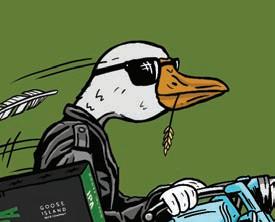
Trouble in Mind

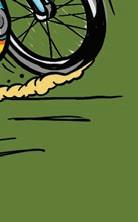

melenas.bandcamp.com/album/dias-raros









Pamplona, Spain, is probably best known for the festival of San Fermín, when thrill seekers run with bulls through the streets—which usually ends much worse for the animals than the humans. The four women in Melenas may not pull as big a crowd as that globally famous event, but on their new second album, Dias Raros (Trouble in Mind), they offer 11 better reasons to remember their hometown’s name. The band’s sound adheres to a template established by garage-rock combos in the 1960s and productively renewed by acts such as Yo La Tengo, Stereolab, and the late, very great New Zealand group Look Blue, Go Purple. Melenas lay trebly, reverberant guitar and alternately drony and punchy keyboard licks over simple, propulsive rock beats, and draw you in with simple, catchy vocal hooks. Since the songs are all in Spanish (the lyrics are printed, but not translated, on the album’s inner sleeve), listeners not conversant in the language might not be able to tell that guitarist Oihana and bassist Leire are singing about internal dialogues. But you don’t need to understand a word to catch the happy-sad vibe that spikes Melenas’ graceful melodies.
—BILL MEYER
Paradise Lost, Obsidian Nuclear Blast paradiselostofficial.bandcamp.com


British five-piece Paradise Lost had already helped pioneer death-doom by the time they put out their second album, 1991’s Gothic , and laid groundwork for subsequent generations of bands that combined metal’s harshness with dark, romantic textures. They’ve since gone through nearly as many drummers as Spinal Tap, but the rest of the lineup—vocalist Nick Holmes, lead guitarist and keyboardist Gregor Mackintosh, rhythm guitarist

Aaron Aedy, and bassist Stephen Edmondson— has remained intact since the band’s founding in 1988. Their longevity may arise in part from their chameleon- like ability to transform their sound; they can deliver a crushing guitar-driven epic fit for leading a battalion of medieval warriors into battle, or a synth-heavy, noirish pop track that could make the most forlorn mall goth smile. Paradise Lost have had ups and downs, but lately they’ve veered back toward their roots: 2017’s Medusa is a master class in achingly heavy doom. True to form, they’ve changed course again on their new 16th album, Obsidian . While Medusa is single-minded in its vision, Obsidian embraces electicsm, pacing its shi s in tone so well that even the most fervent shuffle-button addicts might see the point of the album format. “Darker Forms” kicks off the album with a twinkling melody, then opens up into dark symphonic rock that climaxes with Mackintosh’s heaven-bound guitar solo. On the third track, “Ghosts,” Paradise Lost break out a death-rock sound custom-made for the grimiest subterranean dance fl oors, and on the supersized gothic anthem “Forsaken,” they create a more empowering feel than its title would suggest. The album’s genre looseness notwithstanding, it doesn’t lack for cavernous metal to sink your teeth into, most notably on “The Devil’s Embrace” and closing track “Ravenghast.” Thirty-two years into their career, Paradise Lost have nothing le to prove except to themselves—and with Obsidian they demonstrate what a great place that is for a band to reach.
—JAMIE LUDWIG
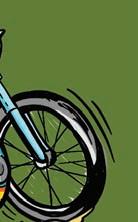

Retirement Party, Runaway Dog Counter Intuitive counterintuitiverecords.bandcamp.com/album/ retirement-party-runaway-dog
Chicago emo acts helped raise the national profile of the fourth-wave scene in the early 2010s, but most of them had gone on hiatus or broken





Summit Chicago
“I take great pride in being the owner of Summit Chicago for over 22 years. The Summit pioneered the dedicated urban meeting environment and now it is the largest growing sector in the meetings industry. Leading the Summit has afforded me the opportunity to build, nurture, and support my team and our clients.”




Louise Silberman, Owner 312.938.2000 | info@summitchicago.com 205 N. Michigan Ave. 10th Floor Chicago, IL 60601 www.summitchicago.com


MAY 14, 2020 - CHICAGO READER 33
MUSIC
Paradise Lost COURTESY THE ARTIST
BIT.LY/GOOSEDELIVERS
MUSIC
up by the time Retirement Party dropped their debut EP, 2017’s Strictly Speaking . Retirement Party not only filled a void in the city but also manifested new energy with subtly retooled combinations of familiar emo, pop-punk, and indie-rock tropes—on their 2018 full-length debut, Somewhat Literate , their workmanlike rhythm section heats up the languid guitars till they smolder. Singer-guitarist Avery Springer wrote all the material for the band’s previous releases by herself, but for Retirement Party’s brand-new Runaway Dog (Counter Intuitive), she collaborated on the music with drummer James Ringness and bassist-guitarist Eddy Rodriguez. Working as a trio, they subdue the nerviness of their early days and reinvigorate their sound with a heavier style. The coarse bass line, skipping drums, and gliding guitars of “No Tide” rub against Springer’s nonchalant vocals to create the tension that propels the track toward its brilliant crescendo. Its upbeat melody and fl eeting, wistful highs make it a contender for song of the summer: “I hope I’ll make it through June,” Springer sings, “a little better off.”
—LEOR GALIL
DJ Taye, Pyrot3k Self-released djtaye.bandcamp.com/album/pyrot3k
Pop music moves fast: new instructional-dance songs, new Drake songs, and new instructionaldance songs by Drake can bombard the zeitgeist one week and all but evaporate the next. Footwork, the lightning-fast Chicago-born house subgenre, is well suited to capture that frenetic pace. Young footwork master and Teklife member DJ Taye instinctively understands how to combine footwork’s adrenaline rush with the pop’s euphoric glee to build tracks with a distinctive energy. Last month he self-released Pyrot3k , the third entry in the Pyrotek mixtape series he launched in October. On the latest volume—also available in a
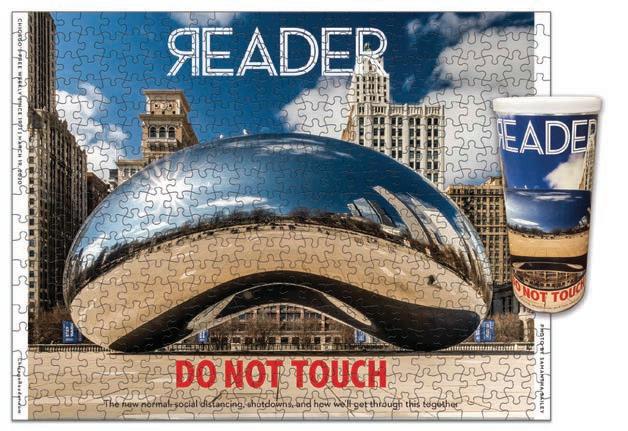
deluxe version called Pyrot3k (SS) —he focuses on blissful melodies and antsy samples. On “Gang,” for example, he loops a snippet of JackBoys’ “Gang Gang” into a hypnotic koan at a speed that makes the original sound like it’s stuck in the mud. Several of Taye’s friends, including Teklife members DJ Earl and Heavee, join in on the fun, and I’m especially partial to his collaboration with Night Slugs label owner James Connolly, aka L-Vis 1990. On “Parade Float,” the two producers whimsically intertwine Morse code beeps and battering-ram gabber-style kick drum to manifest a cartoonish energy that seems to gather itself and balloon outward during the song’s tiny silences.
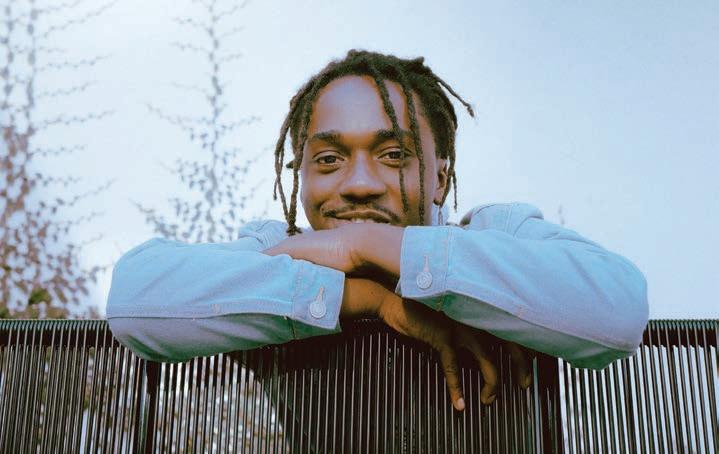 —LEOR GALIL
—LEOR GALIL
Ric Wilson, They Call Me Disco Free Disco/Sounds of Crenshaw/Empire ricwilsonisme.bandcamp.com
Chicago rapper and prison abolitionist Ric Wilson knows the joy of combing through history for jewels of knowledge that enrich his connection to his hometown’s multifaceted Black communities. He also understands how to incorporate sounds from the past into contemporary music. Last year he found a kindred spirit in Terrace Martin, a Los Angeles jazz sideman and hiphop producer who’s worked with some of the most important west-coast rappers of all time, including Snoop Dogg, DJ Quik, and Kendrick Lamar. Martin brings a glimmer of California sunshine and a light touch of funk to the duo’s new collaborative record, They Call Me Disco (Free Disco/Sounds of Crenshaw/Empire). Wilson’s voluble verses saunter over minimal funk guitars, mellow soul synths, and hip-shaking percussion, which Martin tastefully combines in layers like a landscape painter zeroing in on the perfect color for a sunset. The EP is as much a testament to Wilson’s love for disco, soul, and funk as it is an argument that these great art forms can still be crucial conduits for messages about contemporary Black life.
—LEOR GALIL
34 CHICAGO READER - MAY 14, 2020 ll
v
Ric Wilson BETAWAVE
continued from 33
Find more music reviews at chicagoreader.com/soundboard Do Not Touch Puzzle Piece together the first of our iconic Stay Home cover series. This is a 432-piece, 18” x 24” puzzle. The cost of this puzzle is $60 + $10 for shipping. (U.S. orders only) Chicago Reader chicagoreader.com/puzzle
EARLY WARNINGS
GOSSIP
WOLF
A furry ear to the ground of the local music scene
GOSSIP WOLF IS still digging through the heap of new Chicago music that came out on May 1, when Bandcamp waived its revenue share on all sales for 24 hours, but so far Berta Bigtoe is right at the top of the favorites list. The band’s cofounders and sole members, Ben Astrachan and Austin Koenigstein , made Berta Bigtoe Publicity Stunt as a lark. They decided to write and record an entire album on May 1, specifically to post on Bandcamp then (though they spent much of that 24-hour period working on it). The sweet, joyous indie pop on Berta Bigtoe Publicity Stunt feels effortless but clearly takes a lot of skill to pull off—especially in less than a day. Berta Bigtoe moved to Chicago from Boston last year, and this wolf is already looking forward to one day seeing them play a show in their new hometown.
Sunshine Boys ’ debut full-length, Blue Music , was one of Gossip Wolf’s mostloved indie-rock albums of 2018, and this local trio (guitarist Dag Juhlin , drummer Freda Love Smith , and bassist Jackie Schimmel) played such a killer set opening for Juliana Hatfield at SPACE in January that the band couldn’t release new jams soon enough! After a successful Indiegogo campaign earlier this year, Sunshine Boys dropped a scrumptious sophomore album, Work and Love , on Friday, May 1. It’s filled to the brim with jangling power pop, and standout singles “Infinity Girl” and “Summertime Kids” sound like instant classics. Naturally, the band were forced to cancel an April 30 recordrelease show at SPACE due to the pandemic, but this wolf strongly recommends going whenever it’s rescheduled!
When Gossip Wolf last checked in with producer Jeremiah Meece , he was finishing a Halloween-centric album called Mutant Future . Earlier this month, he self-released a full-length of material he’s made during self-isolation—it’s called Suffering, but these warped pop tracks won’t make you suffer unless you miss them!
—J.R. NELSON AND LEOR GALIL
Got a tip? Tweet @Gossip_Wolf or e-mail gossipwolf@chicagoreader.com.

NEW
Tatsu Aoki’s Miyumi Project 7/31, 8:30 PM, Constellation, 18+
Bad Bad Hats 8/23, 7:30 PM, Schubas, 18+ Blanks 11/12, 7:30 PM, Schubas b
Aaron Carter 8/28, 8:30 PM, Wire, Berwyn
CHIRP Radio Showcase featuring Bringers, God Awful Small Affairs, Flamingo Rodeo 11/12, 8 PM, GMan Tavern
Cimafunk 9/6, 8:30 PM, Thalia Hall, 17+
Leo Dan 8/21, 8 PM, Thalia Hall, 17+ Dragonforce 3/23/21, 6 PM, House of Blues b Emo Nite LA 7/3, 9 PM, Subterranean, 17+ Endless Field, Sun Speak 6/25, 8:30 PM, Constellation, 18+ Flux Pavilion 10/29, 7 PM, Concord Music Hall, 18+ Freestyle Forever: Diva Edition 3 featuring Cynthia, Rockell, Sweet Sensation, Judy Torres, Laura, Shana, Lisette Melendez, C-Bank, DJ Richie Rich, DJ Poundd, DJ Destiny, DJ Cross, JV Kidd, Cool Carlos 11/14, 9 PM, Concord Music Hall Greer 12/14, 7:30 PM, Schubas b
Harley Poe, Homeless Gospel Choir 11/5, 8 PM, Wire, Berwyn, 18+ Heaven 17 1/28/21, 7:30 PM, Park West, 18+ Knuckle Puck 11/20, 8 PM, Subterranean, 17+ Lovesexy Prince tribute dance party featuring DJ Salah Ananse, Kwest On 7/31, 10 PM, the Promontory Mmmonika 6/16, 8 PM, Beat Kitchen, 17+
Owen 11/6, 10 PM, Sleeping Village Paris Chansons 7/31, 8 PM, SPACE, Evanston b Pegboy, Bollweevils, Absolutely Not 10/3, 8 PM, Beat Kitchen
Pegboy, Bosley Jr. 10/2, 8 PM, Beat Kitchen Haley Reinhart 8/1, 8 PM, SPACE, Evanston b Rock and Roll Playhouse presents the music of Bob Marley for Kids 7/26, 11:30 AM, Thalia Hall b Rock and Roll Playhouse presents the Music of the Grateful Dead for Kids 6/14, 11:30 AM, Thalia Hall b Rod Tuffcurls & the Bench Press 7/4, 9 PM, House of Blues, 17+ Samul-nori in Chicago 7/24, 8:30 PM, Constellation, 18+ Boz Scaggs 7/20, 7:30 PM, North Shore Center for the Performing Arts, Skokie b Tina Schlieske 7/30, 7:30 PM, SPACE, Evanston b Caroline Spence, Dori Freeman 7/29, 7:30 PM, SPACE, Evanston b
Unlikely Candidates 6/10, 8 PM, Beat Kitchen, 17+ Watkins Family Hour, Courtney Hartman 11/8, 3 and 7 PM, Maurer Hall, Old Town School of Folk Music b Yam Haus 6/13, 8 PM, Beat Kitchen, 17+
UPDATED
NOTE: This is a selection of concerts that were canceled, rescheduled, or postponed in light of ongoing concerns about COVID-19.
Adult 11/13, 10 PM, Empty Bottle, rescheduled Akello 6/3, 8:30 PM, Szold
Hall, Old Town School of Folk Music, postponed until a date to be determined F b Yemi Alade 7/1, 8 PM, Bottom Lounge, canceled Bayside 5/30, 7 PM, Concord Music Hall, canceled Billy Joel 6/26/21, 8 PM, Notre Dame Stadium, rescheduled; tickets purchased for the original date will be honored b
Bowling for Soup 8/27, 8 PM, Bottom Lounge, canceled Brent Faiyaz 9/16, 9 PM, Concord Music Hall, canceled Brook & the Bluff 5/29, 9 PM, Lincoln Hall, postponed until a date to be determined, 18+ Russell E.L. Butler 6/20, 10 PM, Smart Bar, rescheduled Clipping 5/22, 9 PM, Bottom Lounge, postponed until a date to be determined, 17+ Colette’s Birthday and Apt’s 15th anniversary featuring DJ Dan, Colette 5/30, 9 PM, Smart Bar, postponed until a date to be determined Joan Collaso 5/27, 7:30 PM, the Promontory, canceled Danileigh 6/1, 6:30 PM, House of Blues, postponed until a date to be determined b Steve Dawson & Funeral Bonsai Wedding 9/20, 7 PM, Maurer Hall, Old Town School of Folk Music, rescheduled b The Dip 3/25/21, 8 PM, Thalia Hall, rescheduled; tickets purchased for original date will be honored b Eden 5/22, 8 PM, House of Blues, canceled Elephant Stone 3/24/21, 9:30 PM, Sleeping Village, rescheduled Eve 6 5/24, 8 PM, Bottom Lounge, postponed until a date to be determined, 17+ Failure 7/9-7/11, 8 PM, Thalia
Hall, canceled Fauvely 5/28, 9 PM, Emporium Wicker Park, canceled Flamenco Americana with Kati Golenko & Miguel Reyes 12/2, 8:30 PM, Szold Hall, Old Town School of Folk Music, rescheduled F b
Fleetmac Wood presents Rumours Rave with DJ Roxanne Roll, DJ Smooth Sailing 12/12, 9 PM, Chop Shop, rescheduled
Flora Cash 7/25, 7:30 PM, Lincoln Hall, postponed until a date to be determined b
Ezra Furman 5/30, 9:30 PM, Empty Bottle, canceled Vance Gilbert 6/7, 2 PM, SPACE, Evanston, canceled Glenn Underground 8/27, 10 PM, Smart Bar, rescheduled F
Hala 5/28, 9 PM, Schubas, postponed until a date to be determined, 18+ Halsey 6/26/21, 7 PM, Hollywood Casino Amphitheatre, Tinley Park, rescheduled b Jazz Hoofing Quartet 5/25/21, 8 PM, the Promontory, rescheduled b Elton John 6/19-6/20, 8 PM, United Center, postponed until a date to be determined; tickets purchased for the original dates will be honored b
Last Free Exit to the Inner Soular Sis-tem: a Sun Ra/ Juneteenth Celebration featuring Lisa E. Harris 5/28, 8 PM, the Promontory, canceled Hamilton Leithauser 8/3, 8:30 PM, Thalia Hall, rescheduled, 17+
Little River Band 11/8, 7:30 PM, Genesee Theatre, Waukegan, rescheduled; tickets purchased for the original date will be honored b
Loote 7/15, 8 PM, Schubas, canceled
Lowest Pair 6/3, 8 PM, SPACE, Evanston, canceled Magnetic Fields 1/17-1/20/21, 8 PM, City Winery, rescheduled b
Milky Chance 11/5, 7:30 PM, Riviera Theatre, rescheduled b
Mya, 702 8/23, 8 PM, Thalia Hall, rescheduled 99 Neighbors 6/26, 8 PM, Schubas, postponed until a date to be determined b Pitchfork Music Festival 7/177/19, Union Park, canceled; refunds will be issued by point of purchase

Propagandhi 6/20, 8 PM, Metro, canceled; refunds will be issued by point of purchase
Ruby Haunt 6/7, 9:15 PM, Empty Bottle, postponed until a date to be determined
San Cisco 7/1, 8:30 PM, Lincoln Hall, canceled
Shoffy 7/22, 8 PM, Schubas, canceled
Jill Sobule 6/9, 7:30 PM, SPACE, Evanston, canceled Split Single 5/30, 8 PM, SPACE, Evanston, postponed until a date to be determined b
Harrison Storm 5/27, 8 PM, Schubas, canceled
TV Girl 7/11, 9 PM, Lincoln Hall, postponed until a date to be determined, 18+
Velvet Caravan 10/15, 7:30 PM, Tack Room, rescheduled Wonder Years 7/13, 5 PM, Concord Music Hall, canceled Joe Wong & Nite Creatures 10/16, 9 PM, Lincoln Hall, rescheduled; tickets purchased for original date will be honored, 18+ Wood Brothers 11/21, 8 PM, Riviera Theatre, rescheduled; tickets purchased for original date will be honored, 18+
UPCOMING
Acid Mothers Temple & the Melting Paraiso U.F.O. 2/26/21, 8 PM, Subterranean, rescheduled; tickets purchased for original date will be honored
Algiers, Ganser 12/4, 10 PM, Empty Bottle Gary Allan 9/25, 7:30 PM, Genesee Theatre, Waukegan, rescheduled; tickets purchased for the original date will be honored b Shamarr Allen & the Underdawgs 10/7, 8 PM, SPACE, Evanston b Beach Fossils, Wild Nothing 12/6-12/7, 8:30 PM, Thalia Hall, 17+
Caribou, Kaitlyn Aurelia Smith 10/22, 7:30 PM, Riviera Theatre, rescheduled; tickets purchased for original date will be honored, 18+ Dakhabrakha 9/25, 8 PM, Patio Theater b
Dirty Knobs 10/9, 8 PM, Park West, 18+ Ekali 10/3, 8 PM, Concord Music Hall, 18+ Melissa Etheridge 9/26, 7:30 PM, Genesee Theatre, Waukegan b
Gogo Penguin 2/12-2/13/21, 8:30 PM, Constellation, 18+ Sophie B. Hawkins 10/13, 8 PM, City Winery b Judas Priest 9/26, 8 PM, Rosemont Theatre, Rosemont bv
MAY 14, 2020 - CHICAGO READER 35
Never miss a show again. Sign up for the newsletter at chicagoreader. com/early
Haley Reinhart HEATHER KOEPP
CHICAGO SHOWS YOU SHOULD KNOW ABOUT IN THE WEEKS TO COME b ALL AGES F
WOLF BY KEITH HERZIK
By DAN SAVAGE







Q: It’s taken a lot to do this, but here goes. I am a 38-year-old gay male. I have been dating this guy for one year and ten months. It’s been a lot of work. He cheated on me numerous times and he lives with me and doesn’t work and I’ve been taking care of him for seven months now. He always accuses me of cheating or finds something to blame me for. What I am angry about now is how for the past four months he has been accusing me of playing games by conspiring with people to make him hear voices. If I look up at the ceiling or look around he says I am communicating with “them.” I keep telling him I do not hear or see anything but he insists that I am lying. He also says I put a curse on him. One day I got up and he packed his bags and said he had enough and walked out. He said I was not being loyal. This is a man who has been doing coke since the age of 14 and he is now 43 years old. He does meth and whatever else. He said that until I come clean about hearing the voices and admit I cast some sort of spell on him, he won’t talk to me or see me. Mental illness runs in his family and one sibling already committed suicide. He didn’t want professional help because, he says, “I am too smart for that.” I’m hurt and angry and want some advice. ANY ADVICE. Please.

—DESPERATE FOR ANSWERS
A: I don’t see the problem. A delusional and poten-


tially dangerous drug addict with mental health issues who refuses to get help packed his bags and walked out of your life. Yahtzee, DFA, you win. It was his presence in your life (and your apartment) that was the problem and your boyfriend—your ex-boyfriend— just solved it for you. Block his number, change your locks, and pray he forgets your address.
You might wanna seek some professional help yourself. You need to get to the bottom of why you wasted nearly two years on this asshole. Being alone can’t be worse than being with someone who cheats on you and then accuses you of cheating—to say nothing of someone who abuses drugs, hears voices, and makes other irrational/delusional accusations. He wasn’t just a danger to himself, DFA, he was a danger to you. He’s out of your apartment—now you need to get him out of your head.
Q: About a month ago I broke up with my boyfriend a er I found out he was cheating on me. Long before we broke up, I freaked out about a rash and looking back I think it was probably herpes all along. I found out for sure three days ago and I’m honestly thinking about not telling him. He doesn’t show any symptoms and he’s the type of guy who will call me a slut if I tell him. He’ll blame me for his wrongdoing and just keep going and going.

I honestly don’t know if I should tell him, since he’s
asymptomatic. This is going to cause a huge problem between us. He has a lot of anger issues and he could use this as blackmail. I’m legitimately scared. —HER
EX REACTS PERSONALLY

A: Letting a former sex partner know you may have exposed them to an STI—or that they may have exposed you to an STI—is the decent, responsible, courteous, and kind thing to do. Not just for their health and safety, HERP, but for the health and safety of their future sex partners. But people who are unkind, scary, and violent have no one but themselves to blame when a former sex partner/girlfriend/boyfriend/ enbyfriend is too afraid for their own safety to make that disclosure. Provided your fears are legitimate, HERP, and you’re not inflating them to avoid an awkward or unpleasant conversation, you don’t owe your ex a call.






Q: I’m a bi guy, living alone. At the start of the year, this new guy moved into the house where I live—we share communal areas but have private rooms—and he’s a bit of a slacker but holy shit is he hot. I’ve had regular fantasies about him. And now with the quarantine, those fantasies have increased along with the number of times I see him in a day. I’ve been feeling the urge to ask him if he’s interested in anything, but my friends have advised me to “not shit where I eat.” But due to the quarantine, the only other option I

36 CHICAGO READER - MAY 14, 2020 ll
SAVAGE LOVE My boyfriend says I put a curse on him Plus: How to be honest with your hot friends (even during a pandemic)
OPINIONthe cannabis platform a Reader resource for the canna curious nuMed.com | 1308 W. North Ave Chicago’s friendliest cannabis shop Thursdays on Cannabis Conversations chicagoreader.com/joravsky Cannabis Conversations chicagoreader.com/ joravsky To advertise, call 312-392-2934 or email ads@chicagoreader.com www.neuromedici.com 312-772-2313 Findouttoday ifmedical cannabisorinfusiontherapyis rightforyou.Telemedavailable! Yourpartnersinhealthandwellness. Serving medical cannabis patients since 2015. An Essential Calm. Day or Night. Whole-plant hemp formulations for peace of mind and body. mineralhealth.co GET INVOLVED! chicagoreader.com/420book The Reader 420 Companion is filled with great recipes activities and coloring pages Your purchase supports the Reader. 15% of the proceeds will be donated to the Chicago Coalition for the Homeless.
OPINION
have is masturbating and that’s not doing the trick. Should I take the plunge and ask him? —HOUSEHOLD


ENTIRELY LACKS PLEASURE
A: Health authorities have advised us to shit where we eat for the time being. The New York City Health Department recommends masturbation, HELP, because you are and always have been your safest sex partner. But your next safest partner during this pandemic is someone with whom you live. NYC Health has advised us all to “avoid close contact— including sex—with anyone outside your household.”
That doesn’t mean everyone inside your household is fair game, of course; some people are quarantining with their parents. But if there was ever a time when you could approach a nonrelated adult with whom you live to see if they might wanna fuck around, now’s the time. Apologize to the hot slacker in advance for potentially making things awkward and invite him to say no. (“If you’re not interested, please say no and I promise not to bring it up again.”) But if the answer is yes, HELP, send video.
Q: I’m a gay bondage bottom. My boyfriend of four years is 100 percent vanilla and we solved the “problem” of my need to get tied up—and it’s a real need—by outsourcing it. (Can you tell we’re longtime readers and listeners?) I was seeing two regular FWBs/
bondage buddies but that’s obviously on hold right now. (I’ve reached out to both my FWBs to let them know I’m thinking about them and that I care about them, Dan, like you’ve been urging people to do on your show.)
The issue is I still really need to get tied up and my boyfriend is willing, but he’s so bad at it that I don’t want to bother. He knows how much I need it and he’s hurt that I’d rather go without it than let him put me in bondage that isn’t really bondage because I can easily get out. We used to fight because I wanted him to tie me up and he didn’t want to do it and now we’re fighting because he wants to tie me up and I won’t let him do it. Any advice for a fan? —THIS ISN’T EXACTLY DESIRABLE
A: If people can teach yoga, give concerts, and conduct first dates via online streaming services, then one of your bondage buddies can—if they’re into the idea—give your boyfriend a few bondage tutorials online. I’m glad to hear you already reached out to your bondage buddies, TIED, since now you’ll be asking them to do you and your boyfriend a favor. But I imagine it’s a favor they’ll enjoy doing.
Q: I’m a teenage girl with a female friend who keeps joking about having sex with me. We’re both into girls and sex, but while I find her really hot, she probably
doesn’t feel the same about me. How can I tell if she’s joking about it because she finds the idea ridiculous or if she’s joking about it because she actually wants to? Once everything goes back to normal COVID-wise, what should I do? —GETTING INTO REAL LIFE
A: The ability to ask someone a direct question— particularly someone you’re interested in romantically and/or sexually—is an important skill, GIRL, and getting some practice now, when stakes are relatively low, will benefit you all your life. So get your friend on the phone and ask her this: “Are you serious about wanting to have sex with me? It’s fine if you don’t want to, but I’m actually attracted to you. Please say no if the answer’s no.” If the answer is yes, you can make a date to get together once circumstances/pandemics allow. But if the answer is no, GIRL, then you can get some practice making declarative statements: “I don’t want you to make those jokes anymore. They’re hurtful to me.” And if she continues to make jokes about having sex with you a er you’ve made it clear she’s hurting your feelings, then she’s just being cruel and doesn’t deserve your time, attention, or friendship. v
Send letters to mail@ savagelove.net. Download the Savage Lovecast at savagelovecast.com.
@fakedansavage

MAY 14, 2020 - CHICAGO READER 37
The Reader 420 Companion is filled with great recipes, activities and coloring pages. Details may be found at chicagoreader.com/420book 21+ LD Rates Apply 18+(726-8437) (242-8669) 726-8437 242-8669pleaserecyclethispaper We Couldn't Be Free Without You— Support Community Journalism chicagoreader.com/donate Chicago's Free Weekly Since 1971
CLASSIFIEDS
JOBS
(Hoffman Estates, IL) Tate & Lyle Ingredients Americas LLC seeks Principal Scientist, Technical Service w/ Bach or for deg equiv in Food Sci, Food Eng, Chem or rltd fld & 10 yrs experience in job offered or in food indus incl ingred functionality & proc across a number of food categ, incl 10 ears of exp in food chem & food proc; starch chem; using statistical des; tech mngmt of natl accounts in food indus; & wrkng w/ various food manuf proc incl scale up from bench-top to manuf & understdng of ingred perf in various proc units. Freq trvl reqd. Apply to HR, 5450 Prairie Stone Parkway, Hoffman Estates, IL 60192
INTL FCStone Inc. seeks a Senior Data Engineer (Job Code 54477029) in Chicago, IL to execute the full software product lifecycle, including analysis, technical design, development, testing, release, and support for data-driven enterprise applications. Mail resume referencing Job Code 54477029 to Rosemary Carlson, INTL FCStone Inc., 1251 NW Briarcliff Parkway, Suite 800, Kansas City, MO 64116. EOE
Popular Bank seeks Sr. Application Developer/ Analyst – Rosemont, IL Under supervision of managers, analysis, design, program, test and implementation of new/existing business applications and production systems support for client/server and web based enterprise applications (N-tier). design system elements (classes, components, modules etc) by following domain driven design and object orient design methodology to meet functional & non-functional reqs. Under supervision, analyze reqs provided by team members. Identify database entities and prepare logical/physical data models. Construct programming & database elements (tables, views, stored procedure, functions, and triggers). Define system/integration/UAT test plans. Document business process conversion procedures, convert data & verify results. Deploy new/existing systems to production. ** BA/ BS in computer science, computer engor related field + 5 yrs exp in job
or related occupation, or will accept MS plus 3 years in same or related occupation. Prev exp must incl 3-5 yrs w/ skills: * design, develop, test & implement enterprise class apps; * Object Oriented analysis and design, design patterns,refactoring & unit testing using Object Oriented language, Java,C#, PYTHON; * programming exp in ASP.NET, C#, MVC, WCF, SILVERLIGHT,WWF, WPF; * SQL Server Database programming & reporting tools (Crystal Reports, Business Objects); * Sftw dev methodologies such as WATERFALL, RUP, & AGILE methodologies: AGILE, Scrum. *Experience with Provenir Platform 5% travel to main office in NY as req for projts. ***Will accept suitable combo of edu, training, and exp. Apply online at https://jobs. popular.com/ Search Keyword “Sr. Application Developer/Analyst.” Job Req# 33599
Accounting Manager: Arlington Hts IL. Analyze financial info, prep financial reports to determine assets, liabilities, profit, loss, tax liability, other financial activities. Develop, document recordkeeping & accounting systems, making use of current comp tech. Compute taxes owed, prep tax returns, in compliance w/ payment, reporting, or other tax requirements. Exp w/Excel, Quickbooks. Interacts w/employees, subcontractors. Bachelor’s in Accounting or Economics, 1 yr exp as an accountant or any other position related to accounting. Must speak Polish. Res: Optros Property Solutions Corp, fax 872 222 1060
LanzaTech Inc, seeks a Automation Scientist in Skokie, IL to manage and operate LanzaTech’s biofoundry. Req. MS + 2 or BS + 5 yrs exp. Mail resume to: (LanzaTech Inc), Attn: Chris Gesselle, 8045 Lamon Ave Suite 400, Skokie, IL 60077. Must reference Job Title: Automation Scientist; Code: 000054. EOE.
MARKETPLACE
ADULT SERVICES
Danielle’s Lip Service, Erotic Phone Chat. 24/7. Must be 21+. Credit/Debit Cards Accepted. All Fetishes and Fantasies Are Welcomed. Personal, Private and Discrete. 773-935-4995
Glad This Isn’t An App Community-oriented 30 year old woman seeking a man in his 30s who cares about the people and city around him and is interested in a relationship. Let’s talk about books, podcasts, and eat carry out in a park six feet away from one another
chicagoemail606@gmail.com
Heavy metal heart Professional, homeowner, extreme liberal looking for partner in crime for shows, guitar playing, Netflix/pizza nights on the couch. Heavily tattooed, vinyl collector and music obsessed. I drink, smoke, but nothing too crazy, also eat meat etc and looking for same
Ladeeebug17@yahoo.com Instagram: @apocalyptic_days666
I am lonely.
Imprisoned doctor with loving heart, author of many books, no family, seeks mature person (M or F) to share life. Someone loving and forgiving who is looking for a true friend. Someone to help prepare for release and manuscripts for publication for the good life. Be sincere.
rich@prisonersadvocate.org
Tired New York resident comes home to Chicago I’m moving back to where it all began. After 4 years on Wall Street, I’m returning to the richest city in the world in terms of the wealth of friends, family. I will not be coming out of quarantine; I will be emerging from it.
Twitter: @efriend82
sexy senior searcher
Although there›s some snow on the roof, this active 60+ still has a fire down below...seeking a lady who enjoys life. Attitude important... appearance not.
windy_city_lover@yahoo.com
Submit your Reader Matches ad today at chicagoreader. com/matches for FREE.


Matches ads are not guaranteed and will run in print and online on a spaceavailable basis.

38 CHICAGO READER - MAY 14. 2020 ll
JOBS ADMINISTRATIVE SALES & MARKETING FOOD & DRINK SPAS & SALONS BIKE JOBS GENERAL REAL ESTATE RENTALS FOR SALE NON-RESIDENTIAL ROOMATES MARKETPLACE GOODS SERVICES HEALTH & WELLNESS INSTRUCTION MUSIC & ARTS NOTICES MESSAGES LEGAL NOTICES ADULT SERVICES
WANT TO ADD A LISTING TO OUR CLASSIFIEDS? E-mail classified-ads@chicagoreader.com with details or call (312) 392-2970 Whitney Wasson Instagram: @soberrabbit Twitter:@boozetornado • Website:thewhitneywasson.com 22 ChicagoReaderColoringBook Proceeds will be split between the Reader and the more than 50 artists who contributed illustrations. $30 for PDF download $45 for limited edition printed book and PDF download Or send checks to: Chicago Reader Suite 102 2930 S. Michigan Avenue Chicago, Illinois 60616 For copies of this book, either in PDF form or as a printed book, see: chicagoreader.com/coloringbook Provide your name and mailing address and say this is for a coloring book on the memo line.







































MAY 14. 2020 - CHICAGO READER 39 FINANCING AVAILABLE Licensed, Bonded & Insured—IL Roofing Lic. #104.013526 For 40 years, 30,000+ satisfied customers have trusted Second City. • ROOFING • BRICKWORK • GARAGES SHINGLE ROOFS NEW GARAGESFLAT ROOFS ROOFING, GUTTERS & MORE the platform The Chicago Reader Guide to Business and Professional Services www.herreralandscapes.com llllllllllllllllllllllllllllllllllllllllllllllllllllllllllllllllllWe bring your outdoor vision to life! DISCOVER YOUR BLISS www.intimate-bliss.com *WARNING: Must be 18 years or older to visit website and/or place order. To advertise, call 312-392-2934 or email ads@chicagoreader.com SAVE BIG ON A NEW HVAC SYSTEM FINANCING AVAILABLE CREDIT CARS ACCEPTED Up to $2,500 savings for a limited time! Call today for a free estimate! 773-895-2797 | www.MironHVAC.com -Energy Efficient -Innovative comfort features -Great maintenance contracts -24-Hr Emergency Service Psychic ReadingsPalm and Tarot If you are worried, troubled, sick or unhappy through love, business, marriage, luck or whatever your problem may be, I have reunited the separated, healed the sick and help many people with money problems. Whereothershavefailed.Ihave succeeded. I will not ask what you came in for. I will tell you. (773)-540-5037 1222 E 47th St She guarantees to help you. No problem is too big for her COLLABO TIVE PREMARITAL FAMILY DIVORCE MEDIATION Brigi e Schmidt Bell, P.C. Phone and Video Consultations. Call today. BrigitteBell.com Lawyers@bsbpc.com 312-360-1124 travel home improvement psychic real estate advertising books romance legalfuneral services entertainment American Owned American Made We Offer Quality Affordable • At Need Funeral Services • Pre-Planned Funeral Services • Traditional Funeral/Cremation Services • Direct Cremation/Direct Burial • Memorial Services • Specializing in Veterans Services 773-956-4000 5112 S. Western Ave | Chicago, IL 60609 “Let all that you do be done in love” - 1 Cor 16:14 www.GraceAndMercyFS.biz Serving Chicagoland and NW Indiana GraceMercyFS_Reader_033120.indd 1 4/2/20 10:10 AM YOUR AD HERE

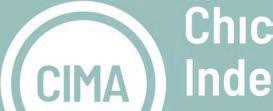

Journalism for the people, by the people: A fundraiser to support 40+ independent Chicago media outlets AirGo Radio Better Government Association Chicago Crusader Chicago Music Guide Chicago Public Square Chicago Reader CHIRP Radio Cicero Independiente City Bureau E3 Radio Free Spirit Media Growing Community Media: Austin Weekly News and Wednesday Journal of Oak Park & River Forest Hyde Park Herald Inside Publications: Skyline, Inside Booster, News Star Injustice Watch: Invisible Institute Kartemquin Films Korea Times Chicago La Raza Newspaper Left Out Magazine Loop North News New City North Lawndale Community News Public Narrative Rebellious Magazine for Women Rivet Sixty Inches from Center SoapBox Productions and Organizing South Shore Current Magazine South Side Weekly Streetwise StudentsXpress Magazine The Beverly Review The Chicago Reporter The Daily Line Third Coast Review West of the Ryan Current Magazine West Side Current Magazine Windy City Times Independent Media outlets in Chicago remain curious about the spectrum of human experience in the most resilient, incredible and segregated city in the world. Through integrity and grit, journalists comb the streets to find out what is happening from the people who know best, everyday Chicagoans. Deadline June 5, 2020 savechicagomedia.org













































































































































































































































































































































































































































































 —LEOR GALIL
—LEOR GALIL
















































